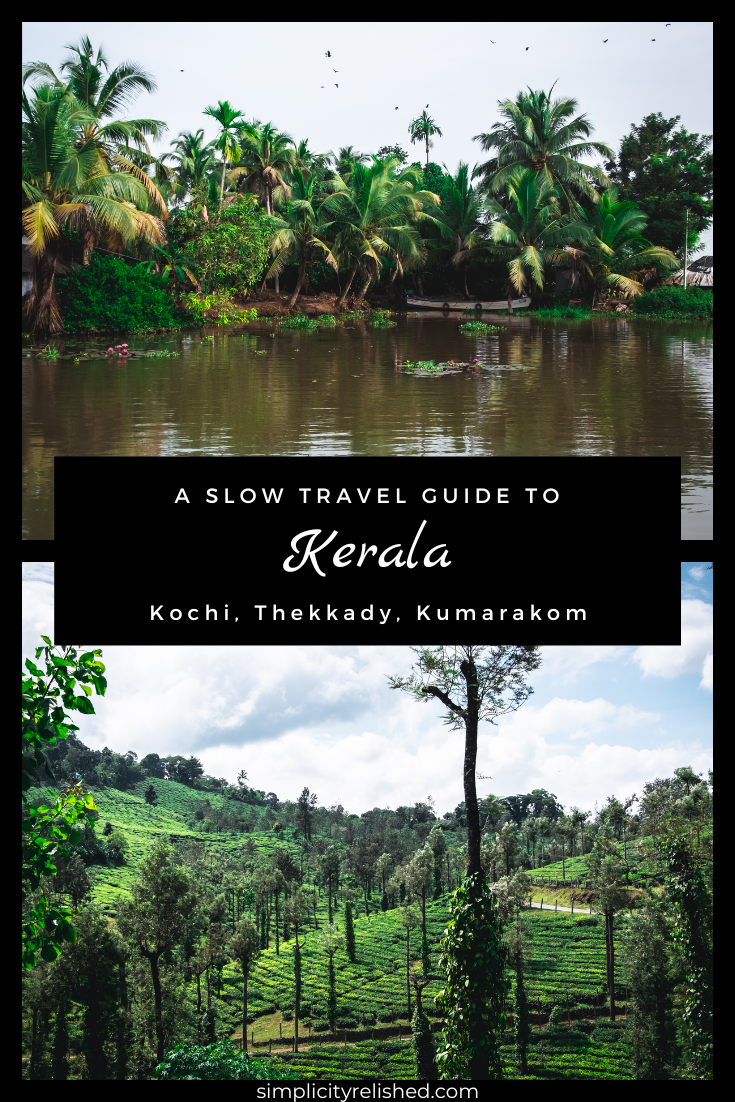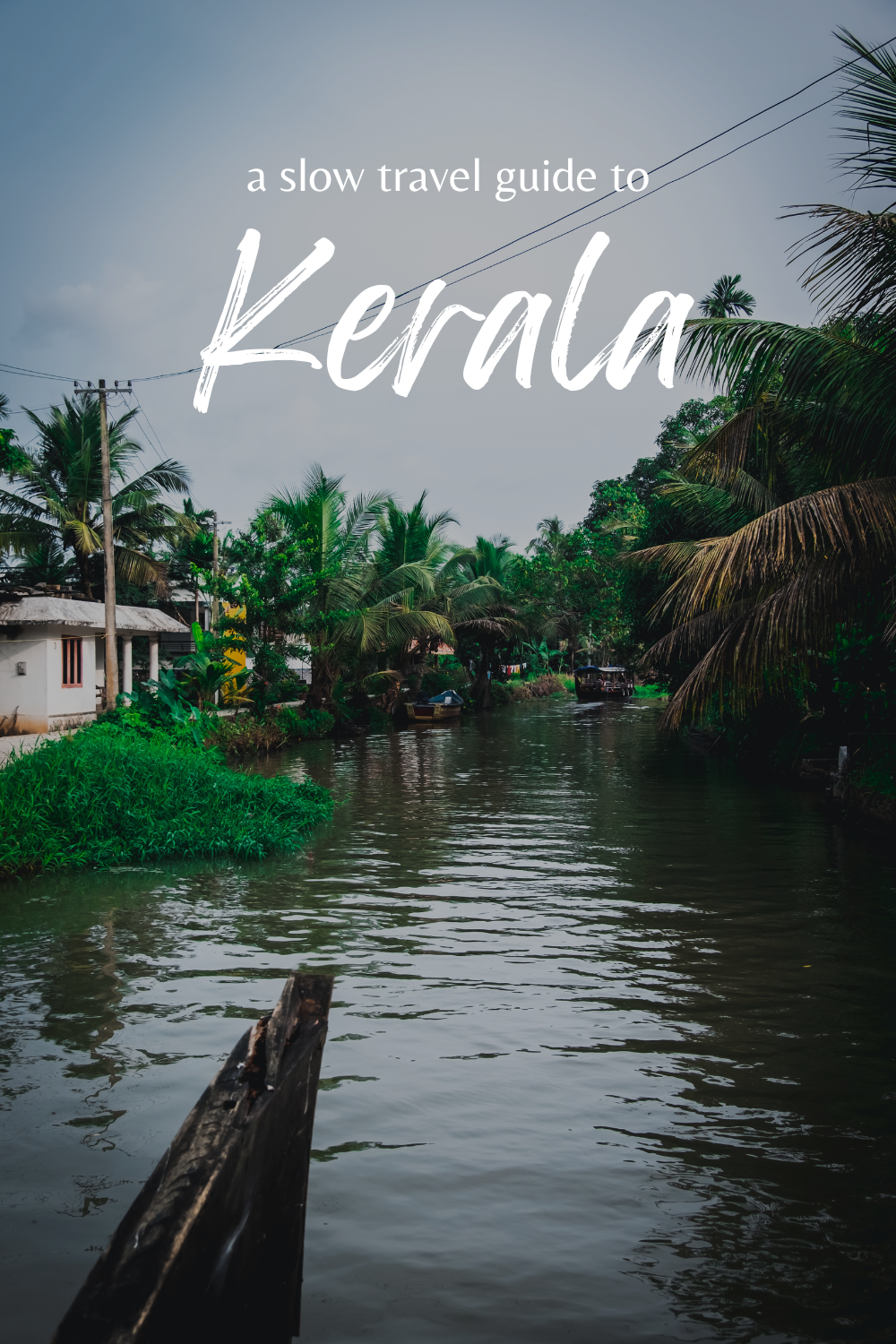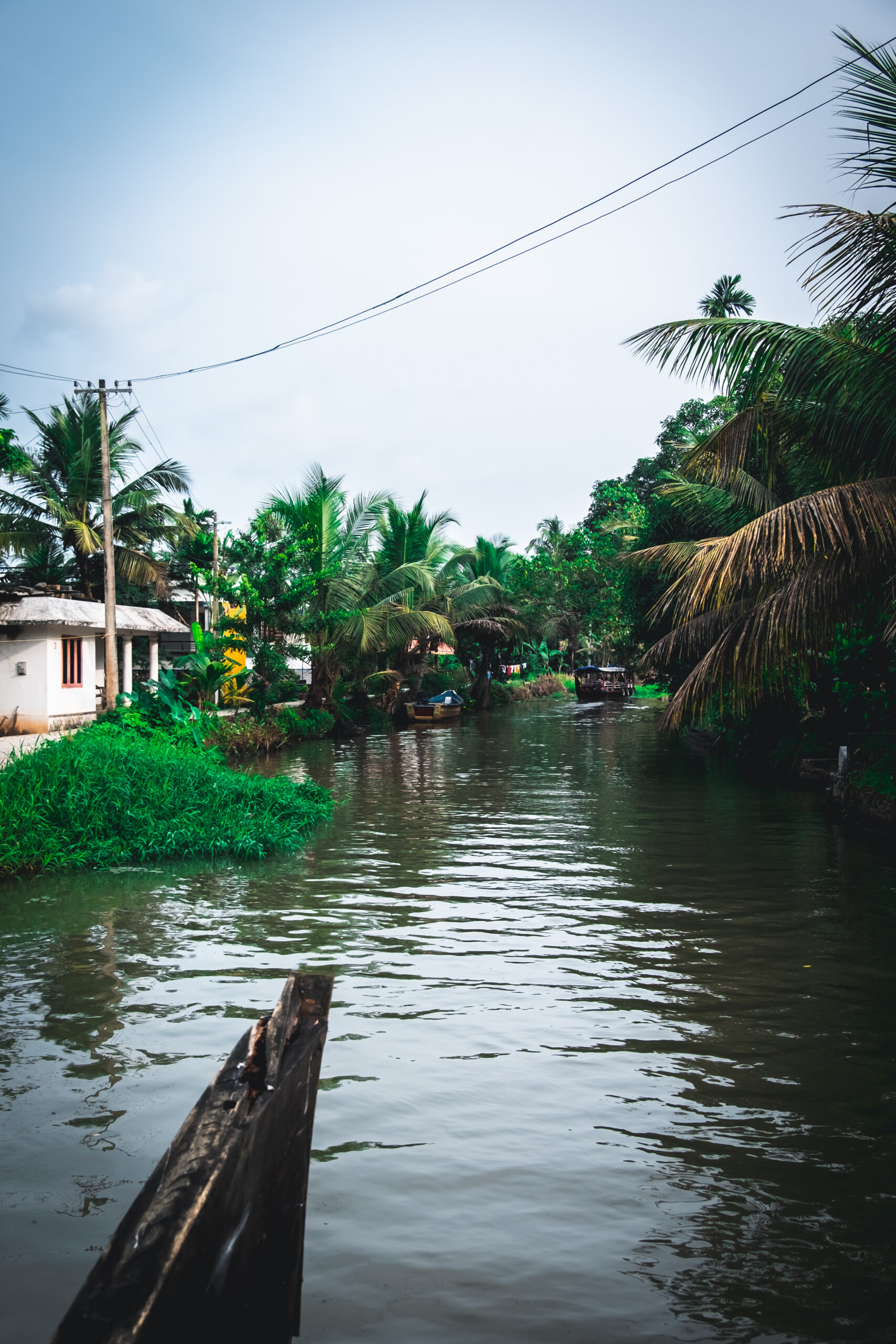It calls itself “God’s Own Country” for a reason. Kerala might be one of the most naturally beautiful places I’ve ever seen. Between winding backwater canals and brilliant diving kingfishers and rolling misty hills with hidden waterfalls, this Southern Indian state holds treasures for any wanderer.
We arrived with some expectations. Having spent a collective 4+ weeks in Northern India (primarily for work and some exploration), we were encouraged by friends and colleagues to visit the South. We were promised palm trees leaning over calm green waters, delightful coconut-based seafood dishes, and lots of humidity with the requisite insects to match. We definitely found all of that, and more.
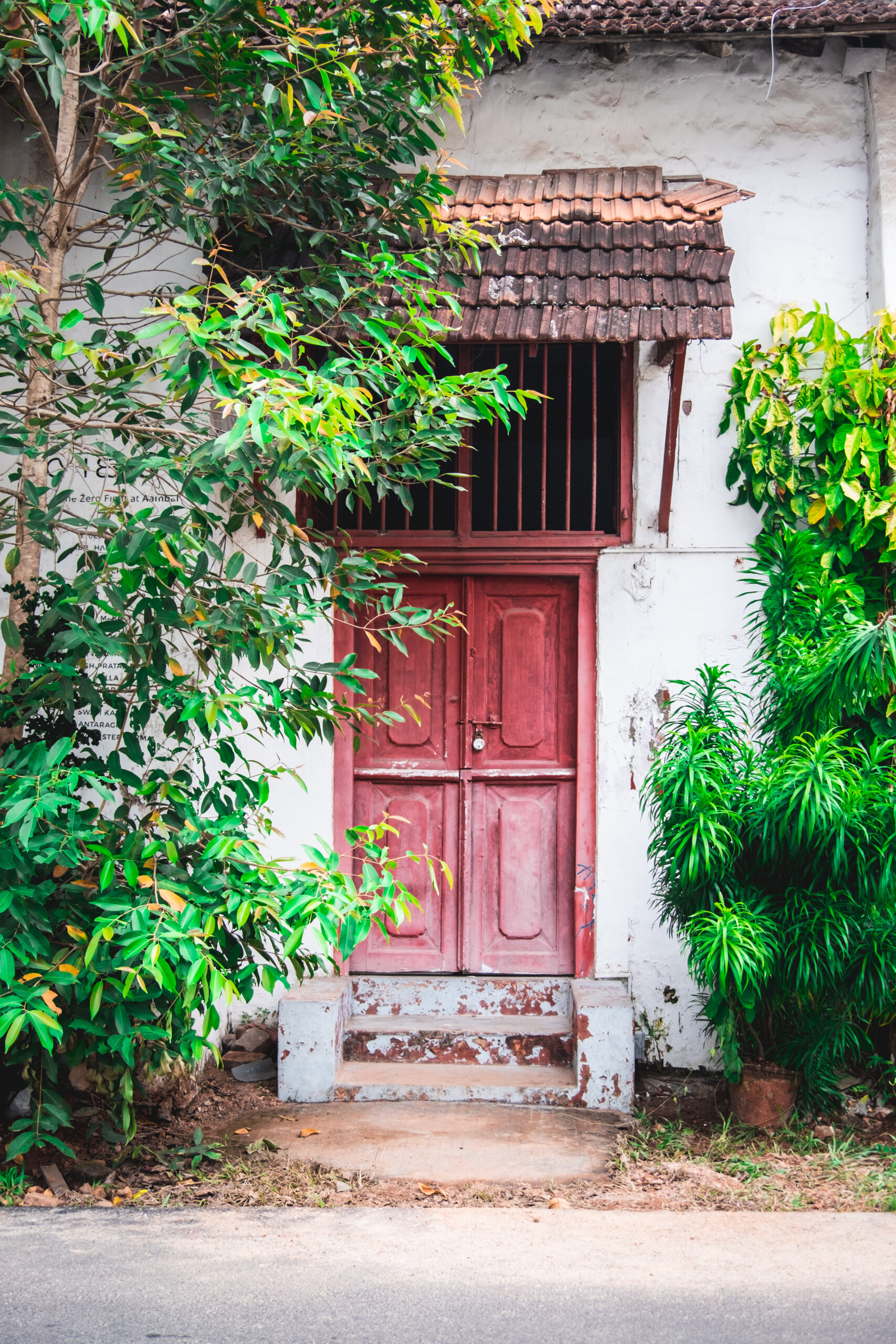
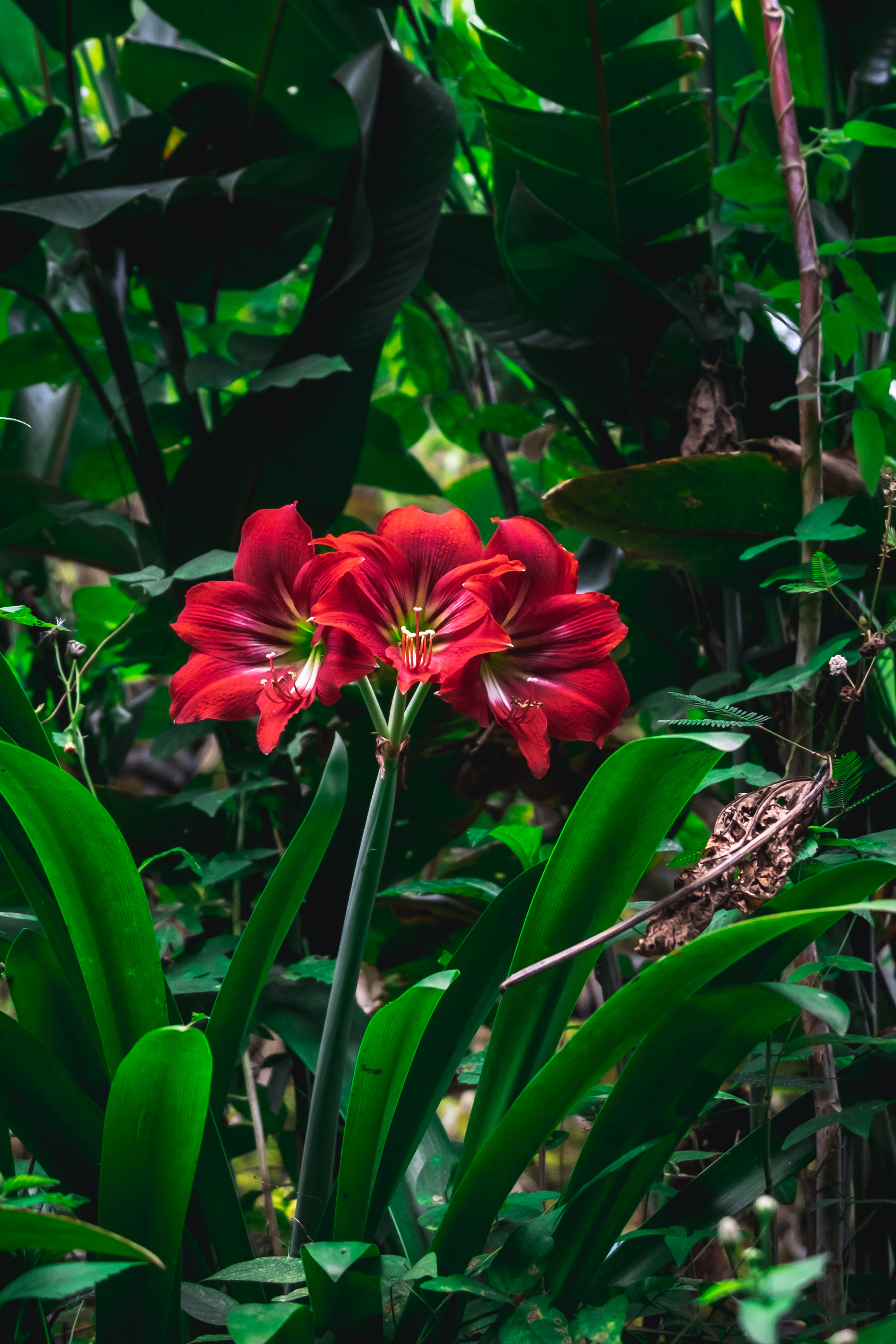
As we were in India for the second time in 6 months and traveling to Kerala after a work engagement, we felt pretty relaxed about the days we would spend there. Perhaps even a little tired.
I myself was ready to unplug a bit and simply take in what I could in the present moment. To be fully engaged with all five senses and a deep awareness, without the hurried ambitiousness of having to do absolutely “everything.” One thing I’ve learned about India is that there is no such thing as seeing everything. There’s just too much, and we are merely human.
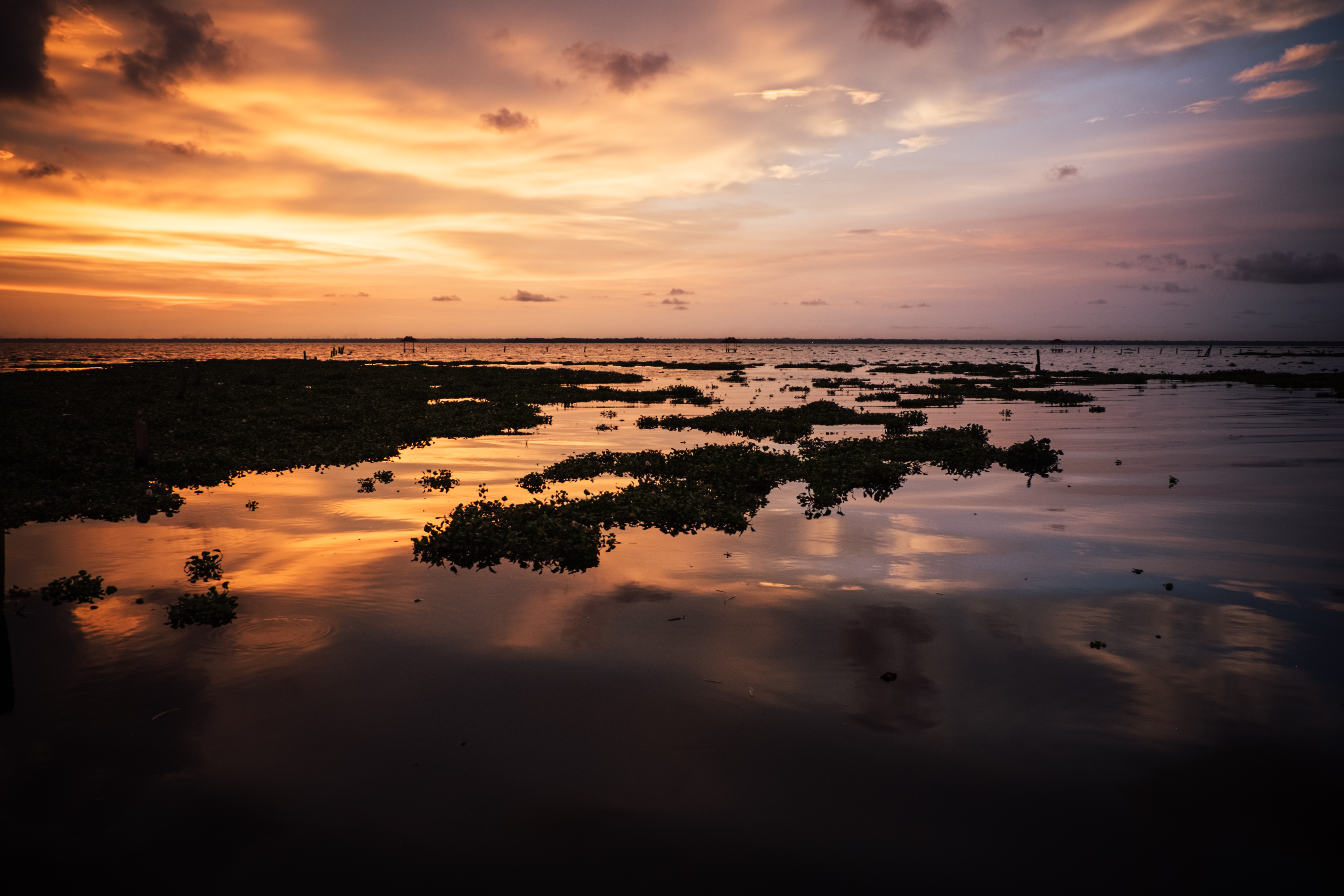
Table of Contents
Kerala is perfect for slow travel
There’s plenty to do in Kerala, but a lot of it is pretty spread out and only accessible by car or bus. If you wanted to see as much as possible, you could, but it would mean lots of time in transit.
Meanwhile, there is so much beauty in the details. Beyond Kochi, we escaped first to Thekkady, where tea and spice farms are nestled in the cool mountain air. Then we came back down to Kumarakom, an inner backwater village with a stunning lake.
We lived for the silent moments, the shifting clouds, the immense range of greenery. We savored local flavors, delightful preparations unseen elsewhere in India.
With its unique history and geography, traveling in Kerala felt so different from visiting a place like Jaipur. There aren’t multiple old forts and temples and palaces to see; Kerala is less about the lavish creations of royalty and tradespeople, and more about the culture and lived experiences that arise from the immense gifts of the earth.
Of course, Kerala has seen its fair share of outsiders— colonizers, missionaries, migrants and traders of its own— but their impact has created a different feel. For the observant traveler, there’s less of a need to frantically rush from one site to another. It’s better taken in one step, one bite, one breath at a time.
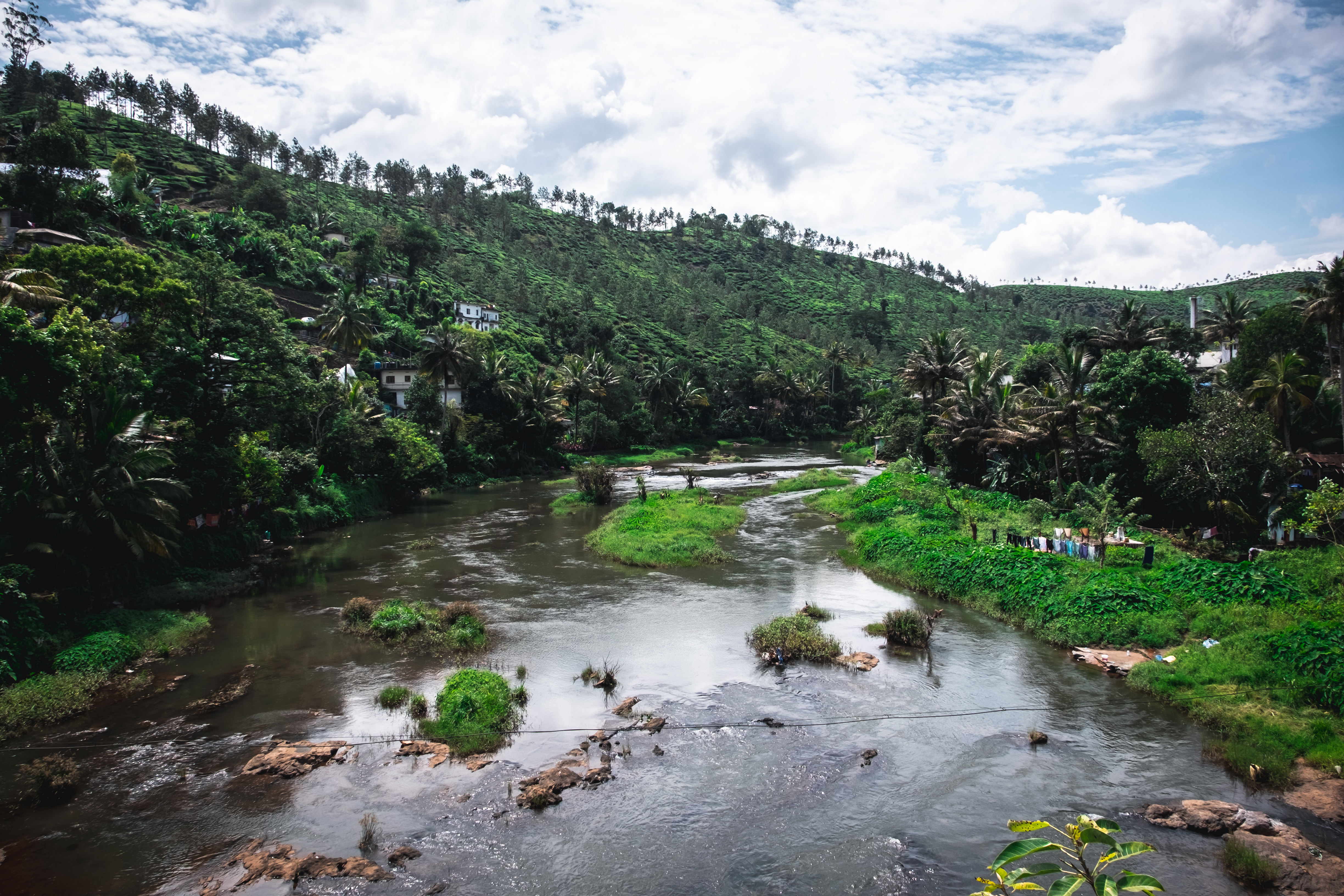
Forte Kochi: an amalgam of influences
Most visitors spend their time in Kochi in a small area called Forte Kochi. This is where you’ll find the famed Chinese fishing nets and daily catch, the old churches, the area known as Jew Town, and historic streets and shops.
We found Forte Kochi to be a wonderful place to begin, to familiarize ourselves a bit with the story and aesthetic of Kerala.
If you arrive by mid-day, then it might be sufficient to spend just 1 night in Forte Kochi. A slow amble through the town offers a chance to see most of the highlights and appreciate the numerous influences of the many different cultures that have established themselves here.
While numerous auto-rickshaw (tuk-tuk) drivers offered to take us around, we found walking to be a great way to notice the details and take it all in.
For a more detailed overview of things to see and do in Forte Kochi, I recommend these posts by Along Dusty Roads and Third Eye Traveler (posts linked). Personally I had more fun just stumbling across what we could with very little planned!
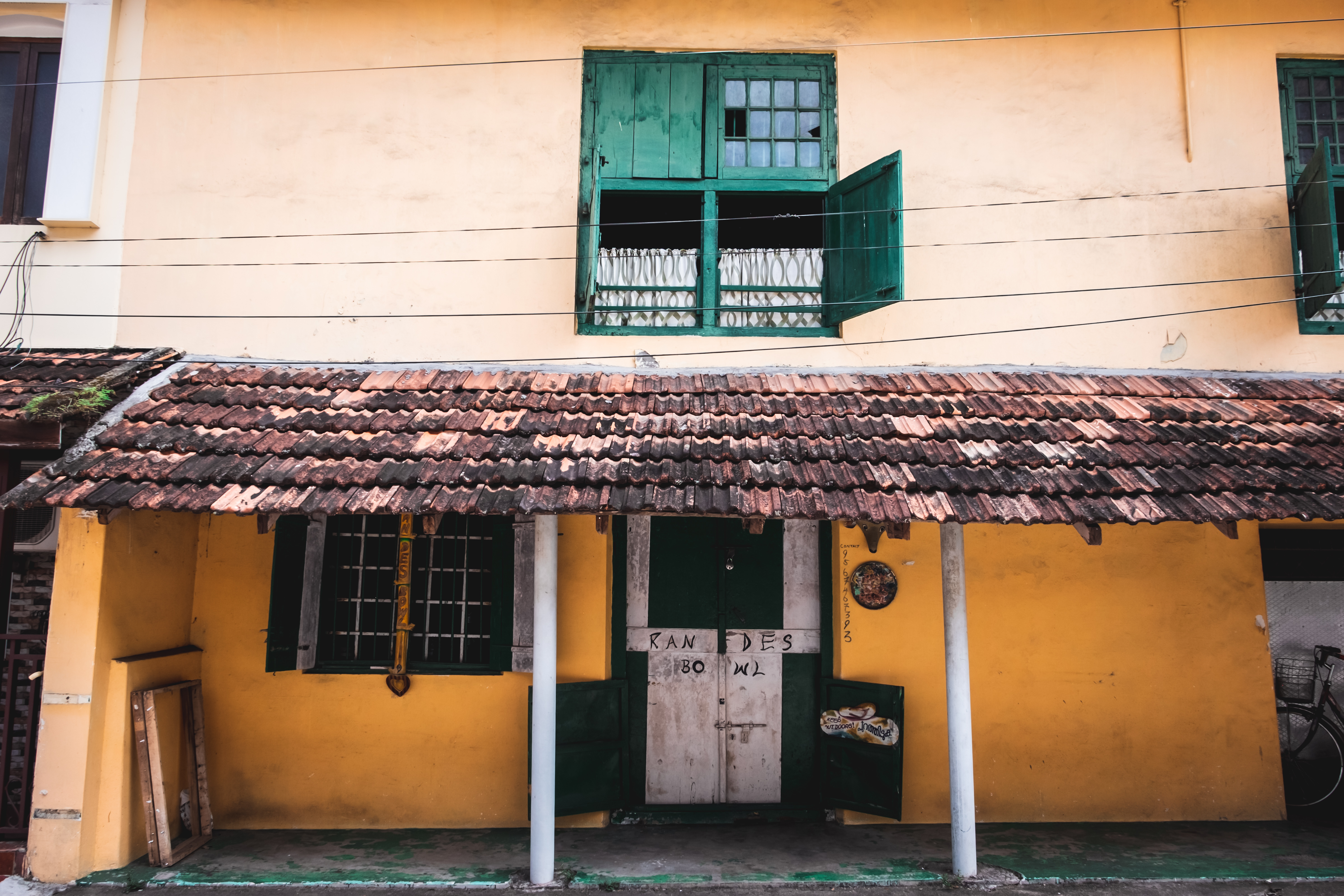


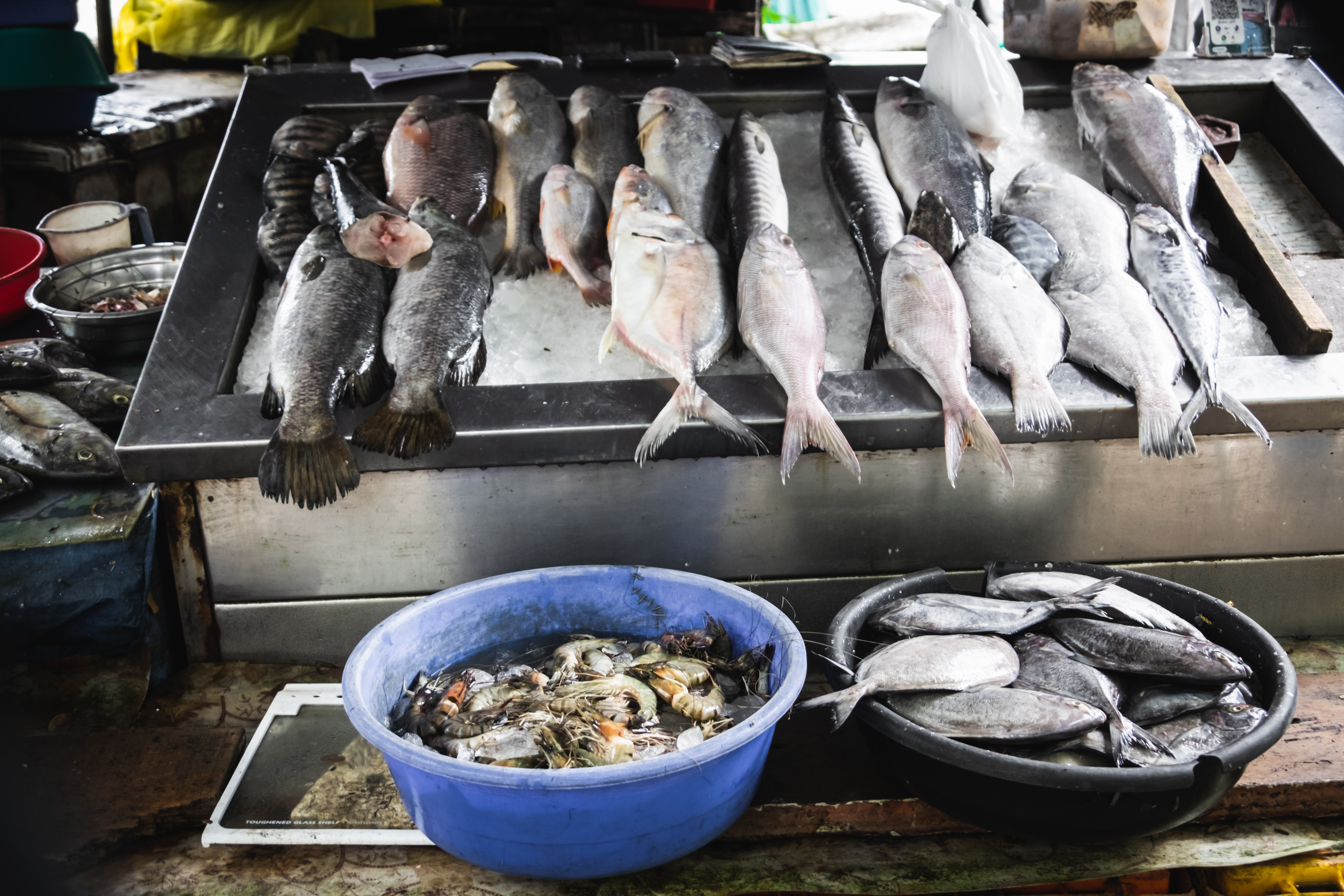
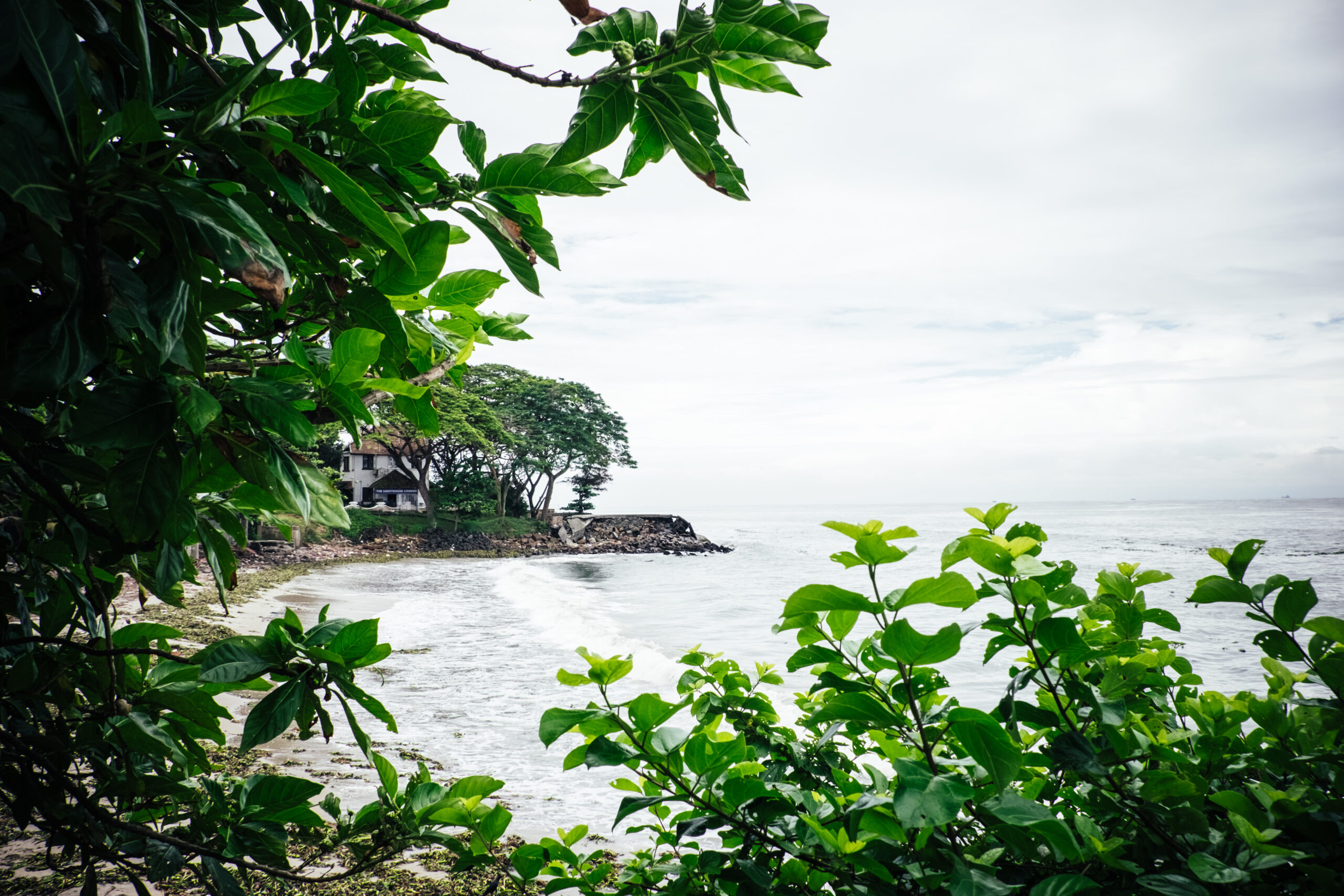
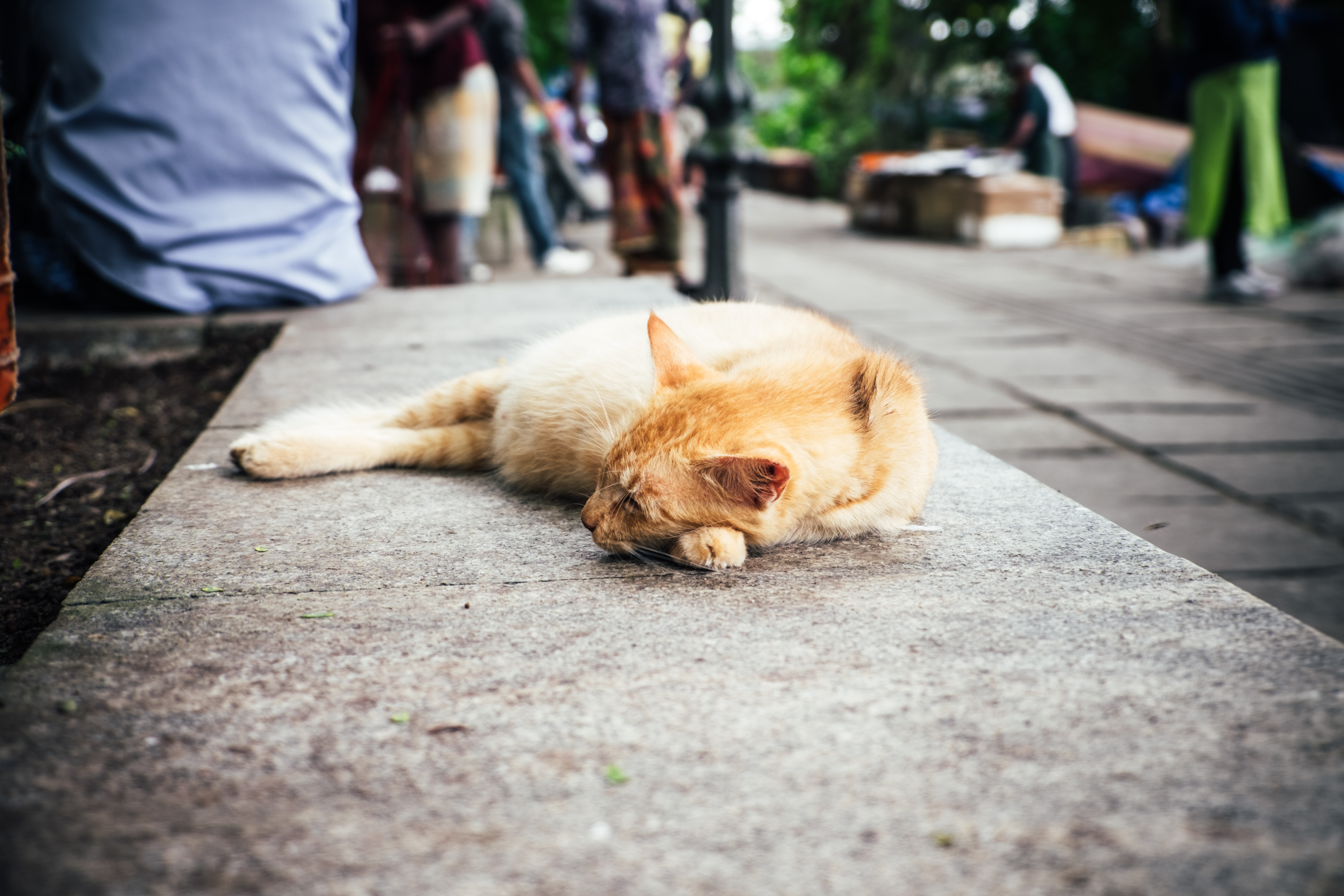
Where to stay in Forte Kochi
As this was the “vacation” part of our time in India, we decided to stay at the historic Forte Kochi Hotel, one of the cutest boutique accommodations I could find. The hotel itself is centrally located and almost everything you would want to see is within walking distance (except Jew Town, which requires a short ride).
Since Kerala has long been popular with backpackers, it’s full of lower-budget and hostel-style accommodations as well. If you’re traveling on a budget, it’s fairly easy to find a place that works for you.
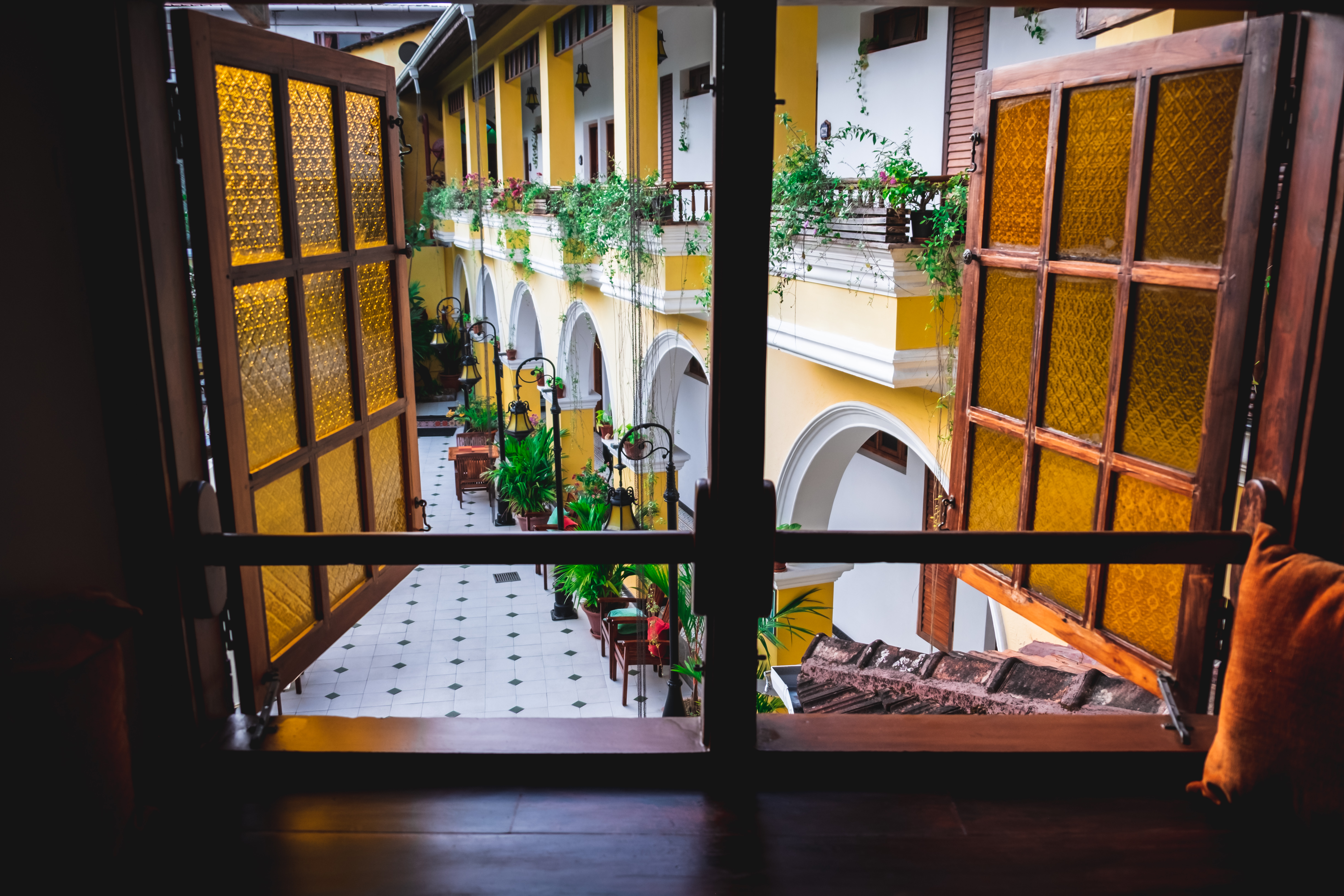
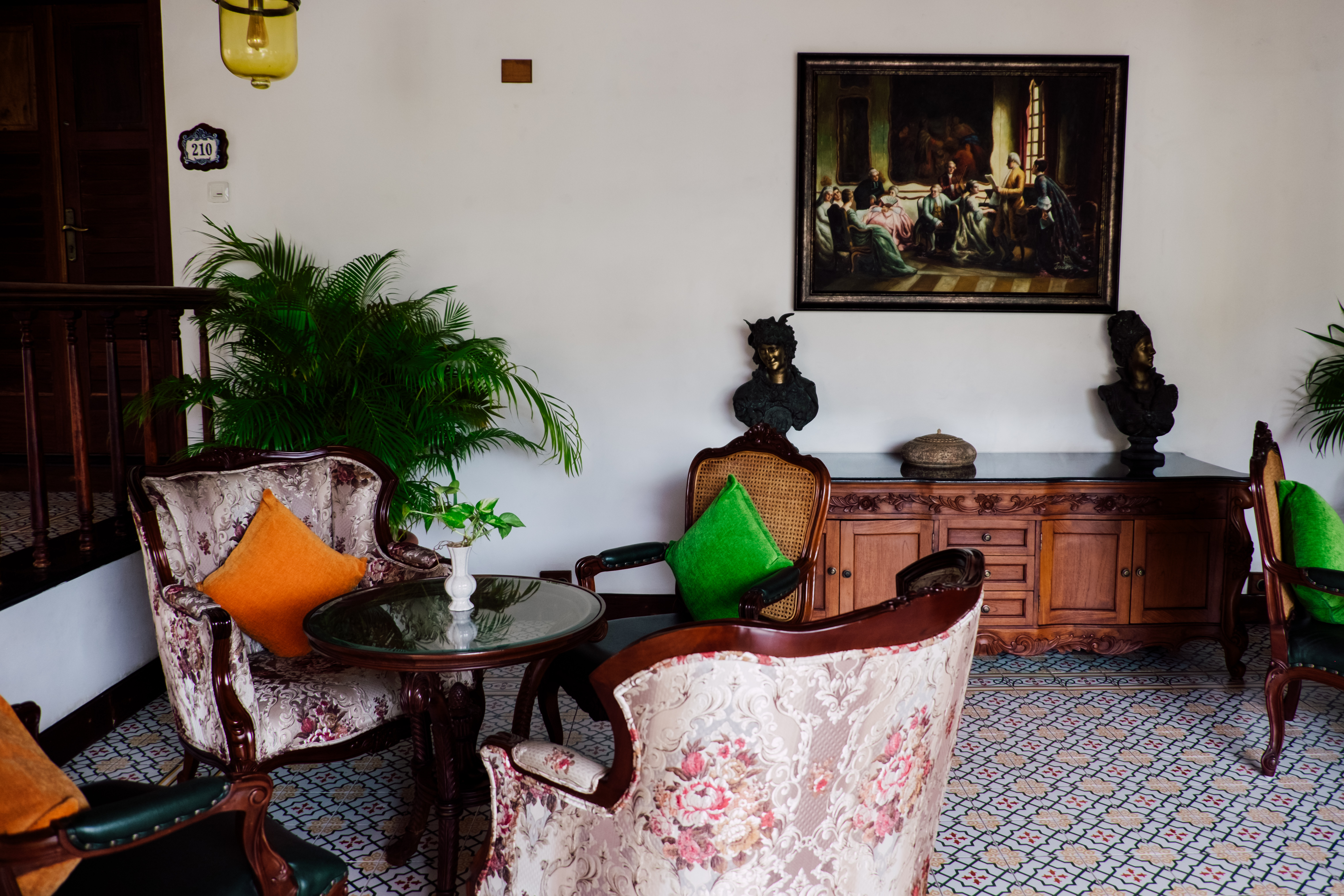
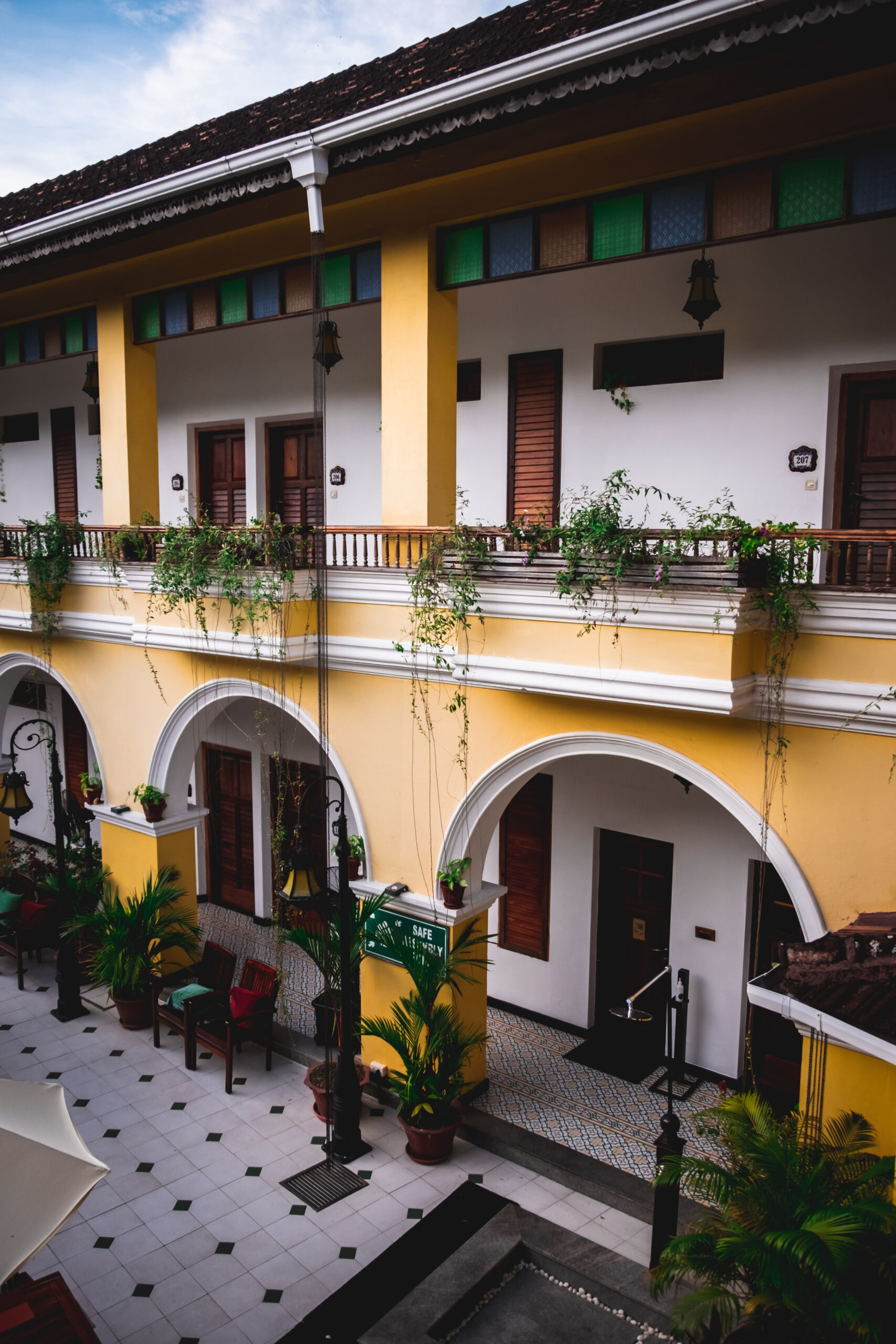
Thekkady: Kerala’s mountain paradise
So, a lot of Kerala visitors go to Munnar, which is famous for its historic tea plantations that supply much of the local tea and exports as well. After doing some research, we felt that Thekkady could be just as exciting and maybe a little less touristy. Since we didn’t go to Munnar, perhaps we’ll never know.
Despite a somewhat challenging 5-hour ascent to Thekaddy (if you get motion-sick, bring medicine with you!), the drive itself was absolutely stunning. At a certain elevation, you’re able to gaze across gulches and valleys to spot vast waterfalls gushing down the mountainside. It is incredibly idyllic.
Unfortunately I had misplaced one of my Dramamine boxes and was rationing this entire trip, so we decided not to stop too frequently along the way. I wish now that I took a few photos of these views. Oh, how I envy those of you who can sit in car rides without feeling sick! As for transportation from Kochi to Thekkady, there are certainly local buses, but if you can afford a taxi then I highly recommend it.
Thekkady is known for being close to the Periyar Reserve, along with having its own tea and spice plantations, beautiful hill towns, and generally very laid-back vibe. Our goal was to escape to the mountains for some reflection and relaxation, so we really made decisions based on that. We decided to stay at the lovely Niraamaya Retreats Cardamom Club, which was hidden away on a long dirt path off of the main road through Thekkady.

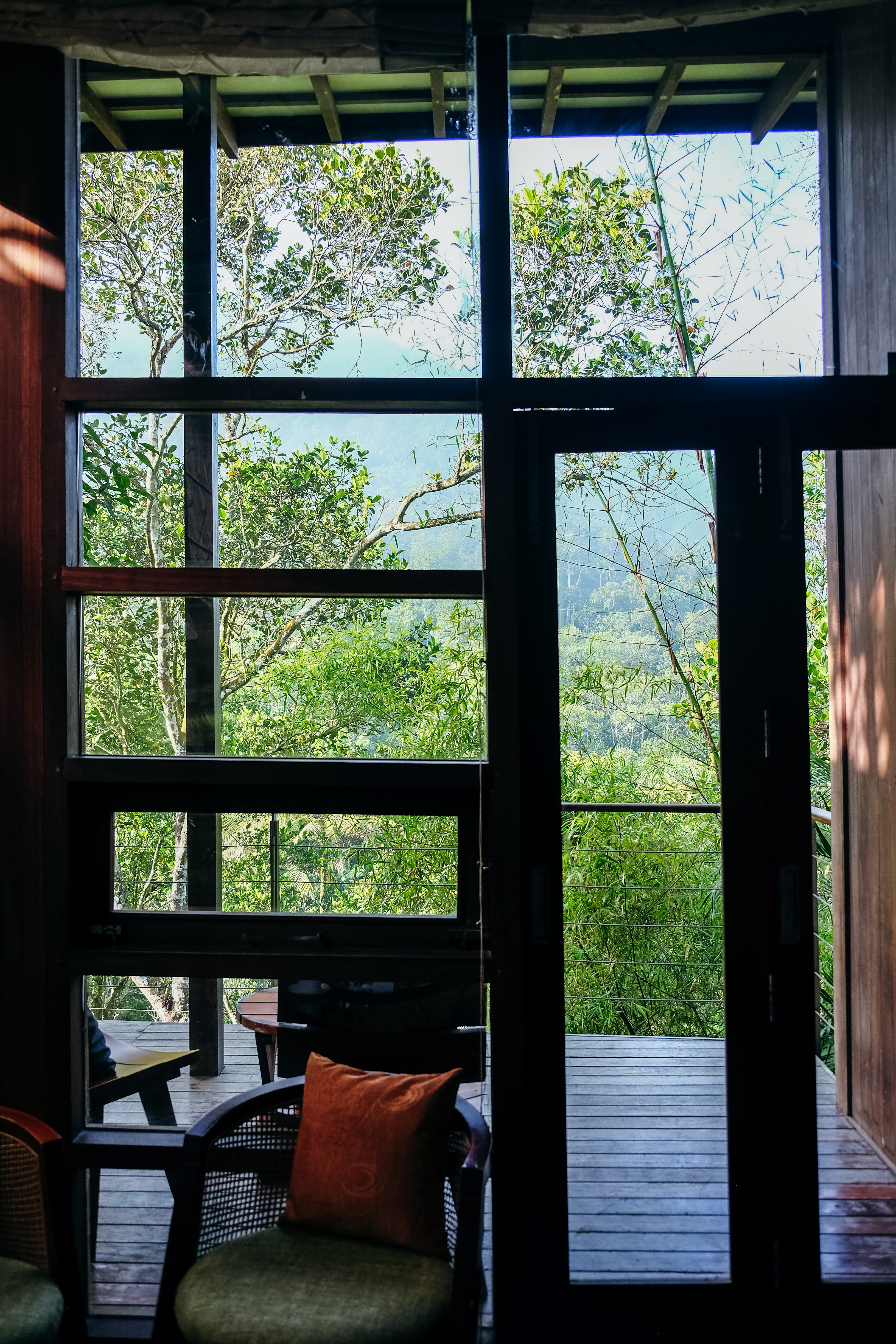
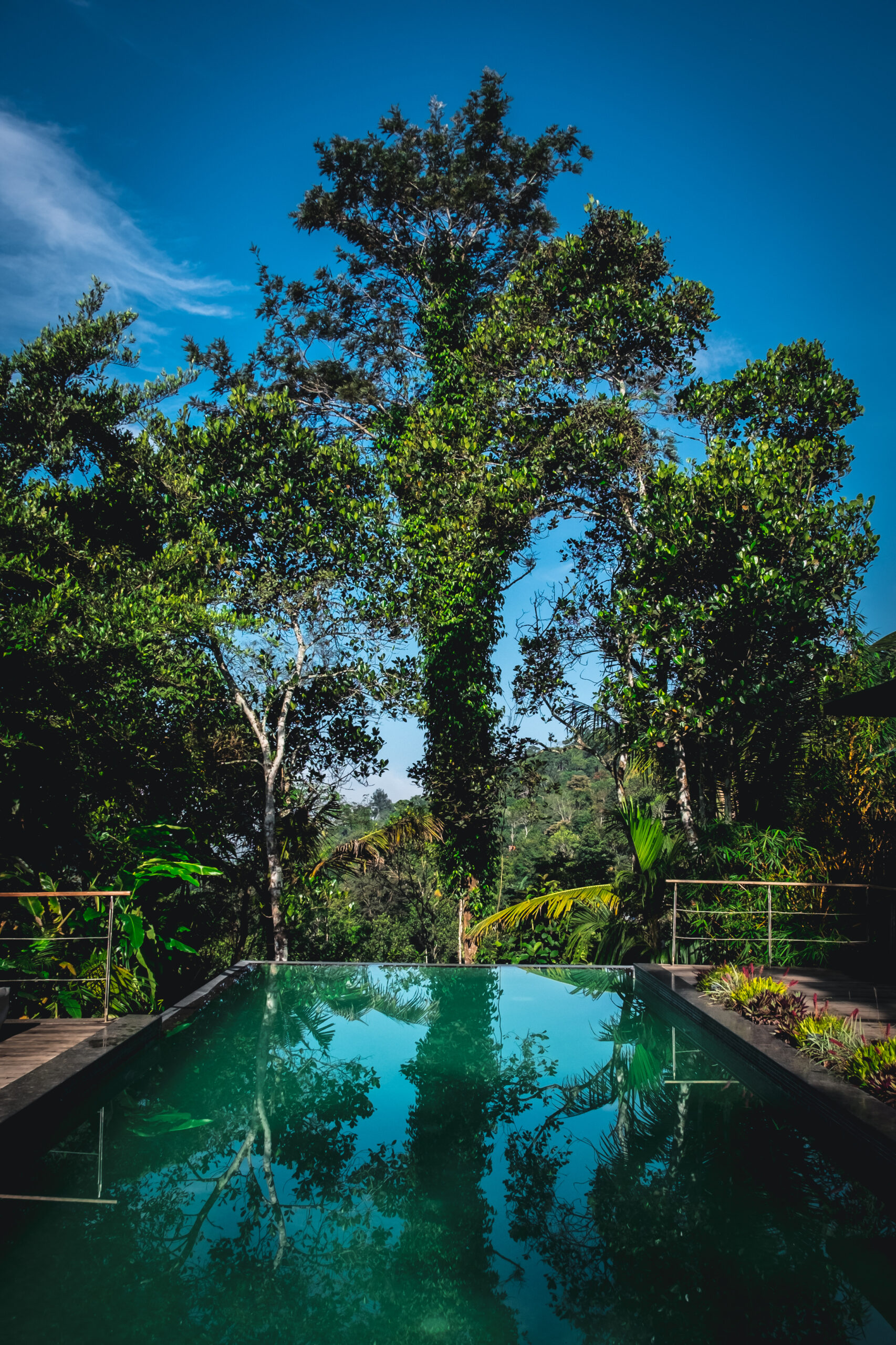
We did visit a local spice farm to learn about the many flavors we love, how they are cultivated, and what they look like. We also took the opportunity to try some of the Ayurvedic treatments available at our hotel as a way to both feel refreshed and also learn something new. If you’ve never tried ayurveda before, this is a great place to experience it and learn about the traditional medicine that has been practiced here for centuries.
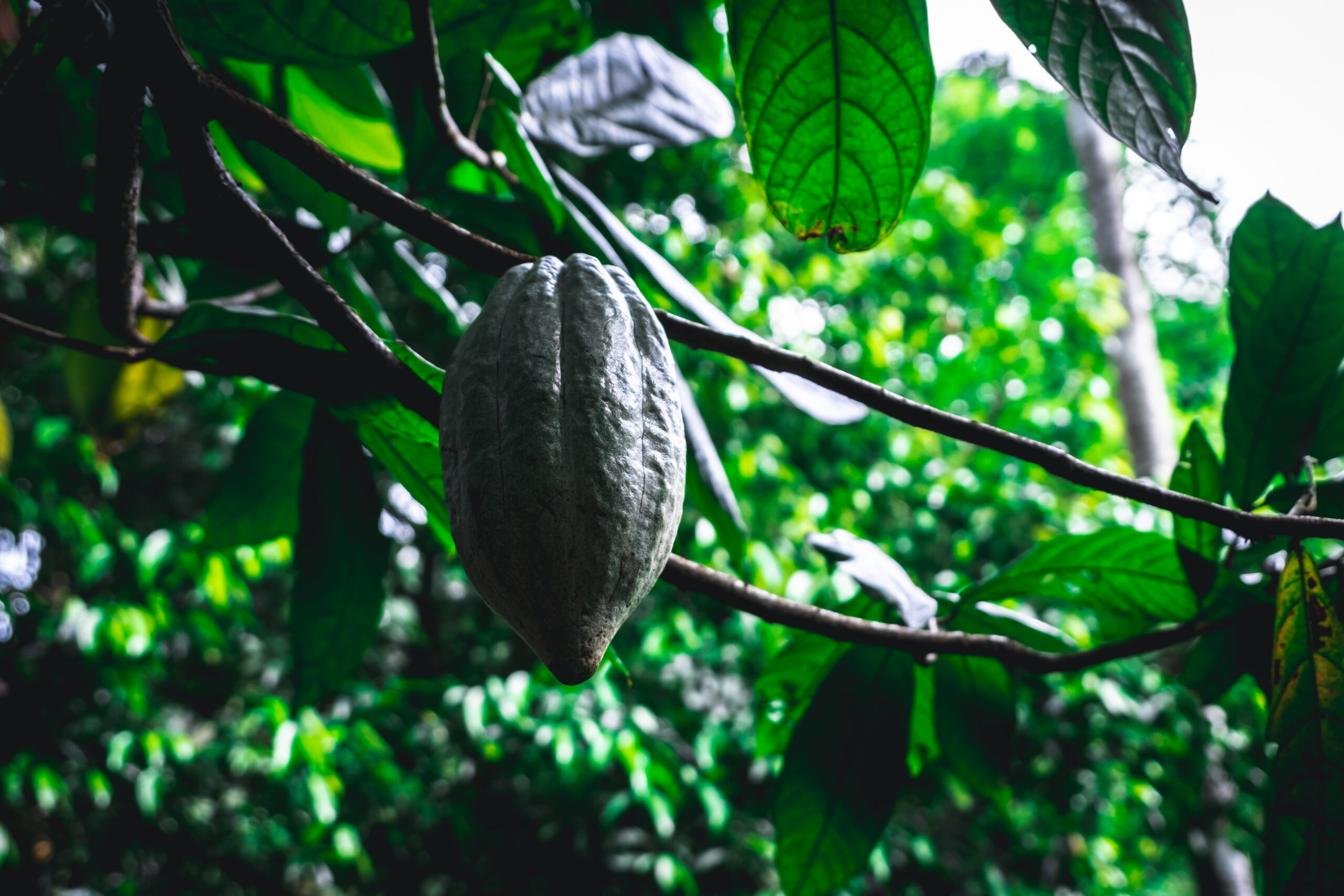
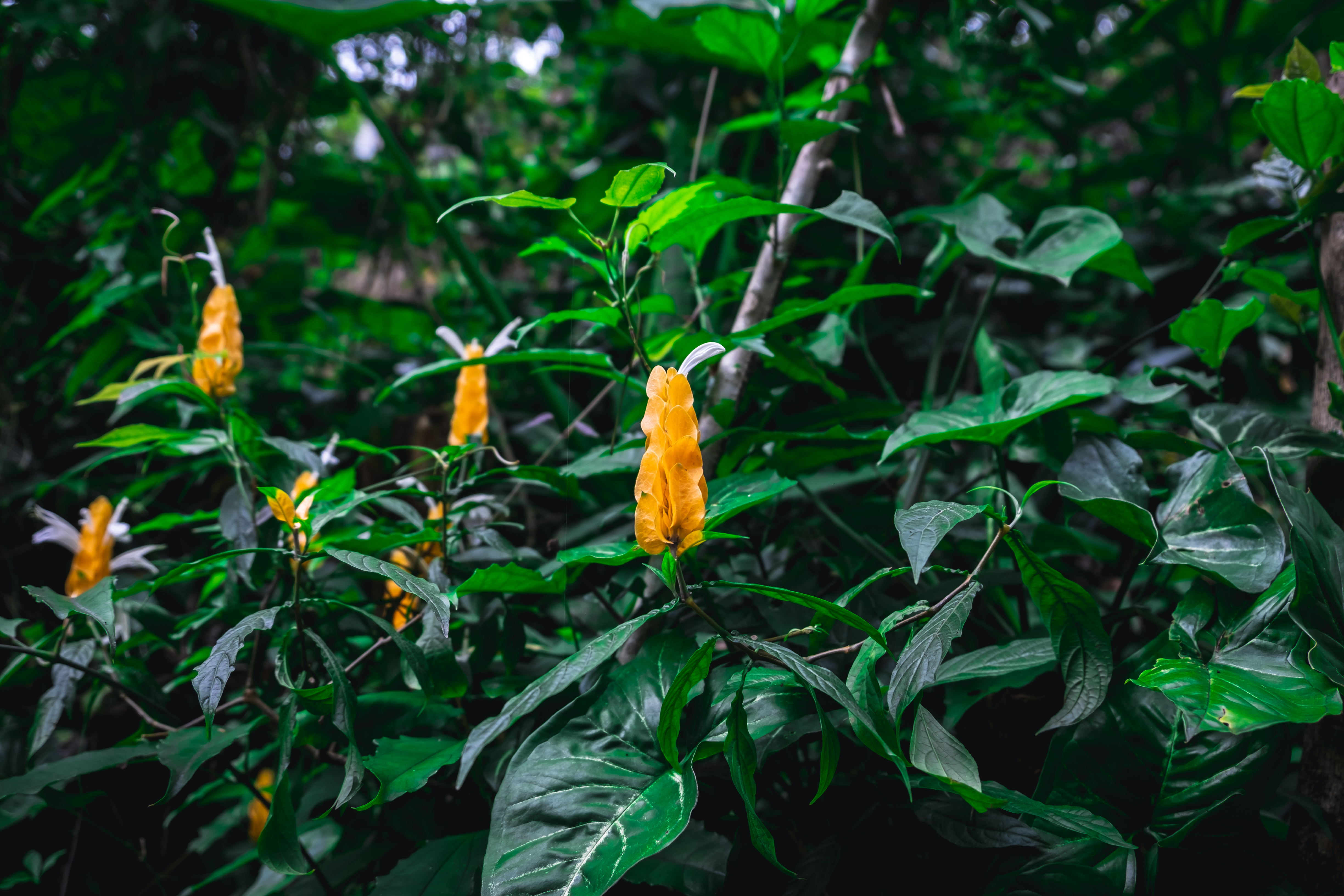
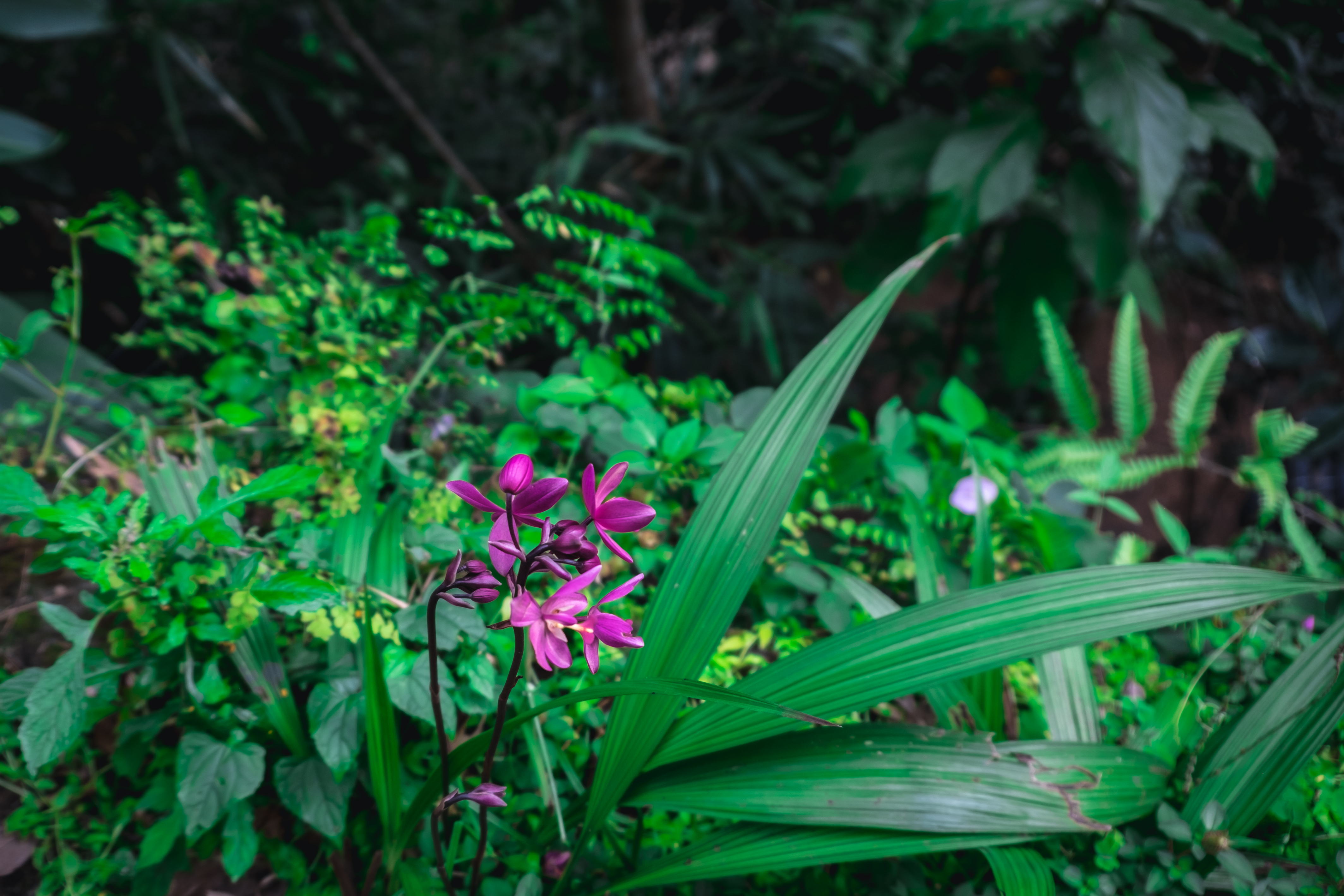
Visiting a tea farm in Thekkady
As we departed Thekkady, we stopped at one of the many tea farms that allow visitors. This is a lovely way to learn about the tea industry in India— and to take stunning photos of the many rows of camelia plants you see as you enter the region.
Our guide introduced us to the story of the farm, the origins of the tea plant, and then showed us how tea is harvested an processed here in India. As the British initially established tea plantations to serve their consumption, most all of the tea produced in the region is black tea. According to our guide, these days about half of the tea produced on the farm stays in India, and the other half goes abroad (he did not say to which companies or where).
As someone whose family has drunk tea for generations, I will say that the tea here is not the highest quality you can find in the world. It is ground very fine and, in my opinion, is best made into masala chai with the spices and milk to balance the bitterness. Still, it’s interesting to understand a bit more about the history of tea, how it was established in this region, and the livelihoods it continues to sustain.
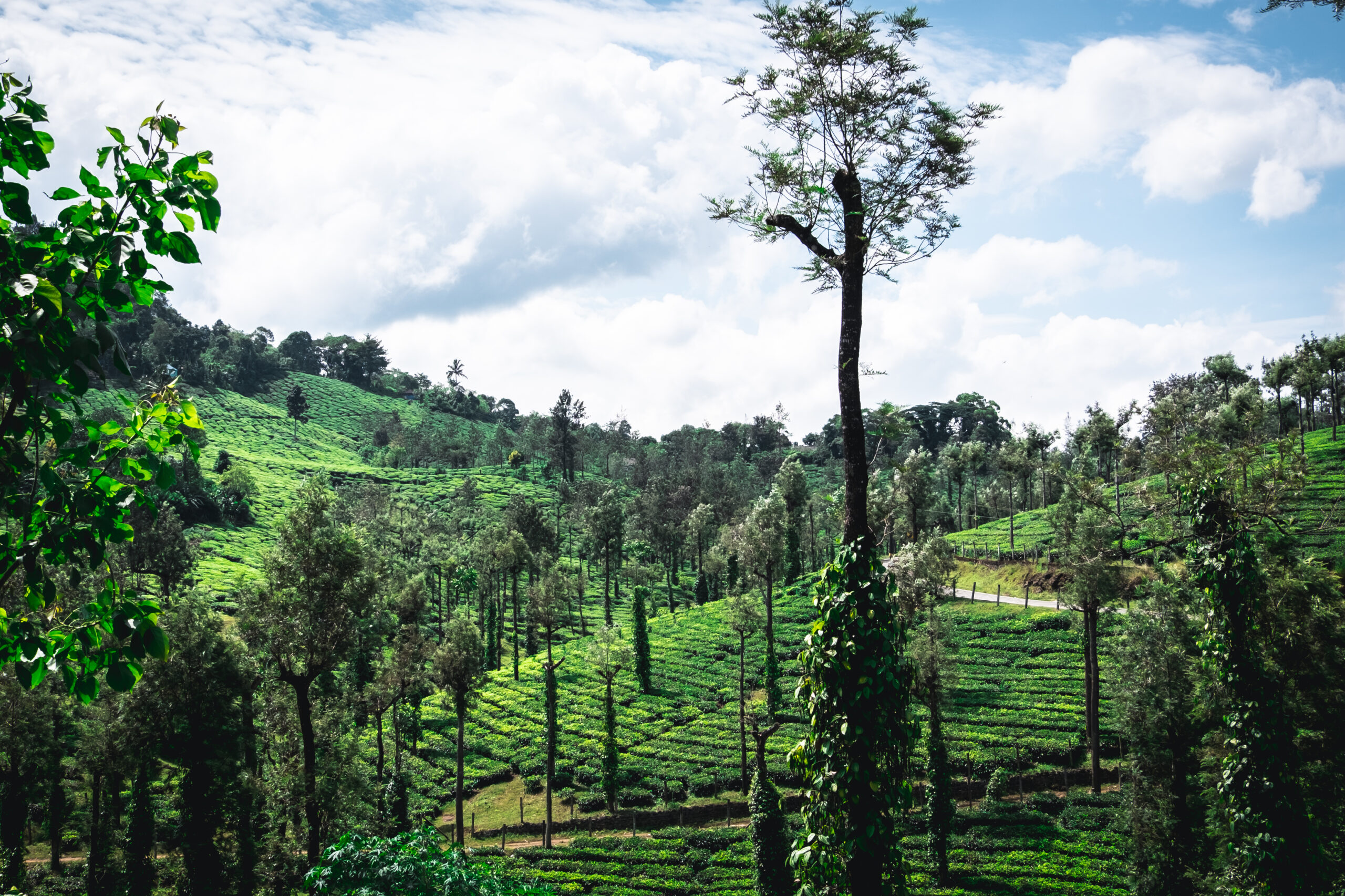
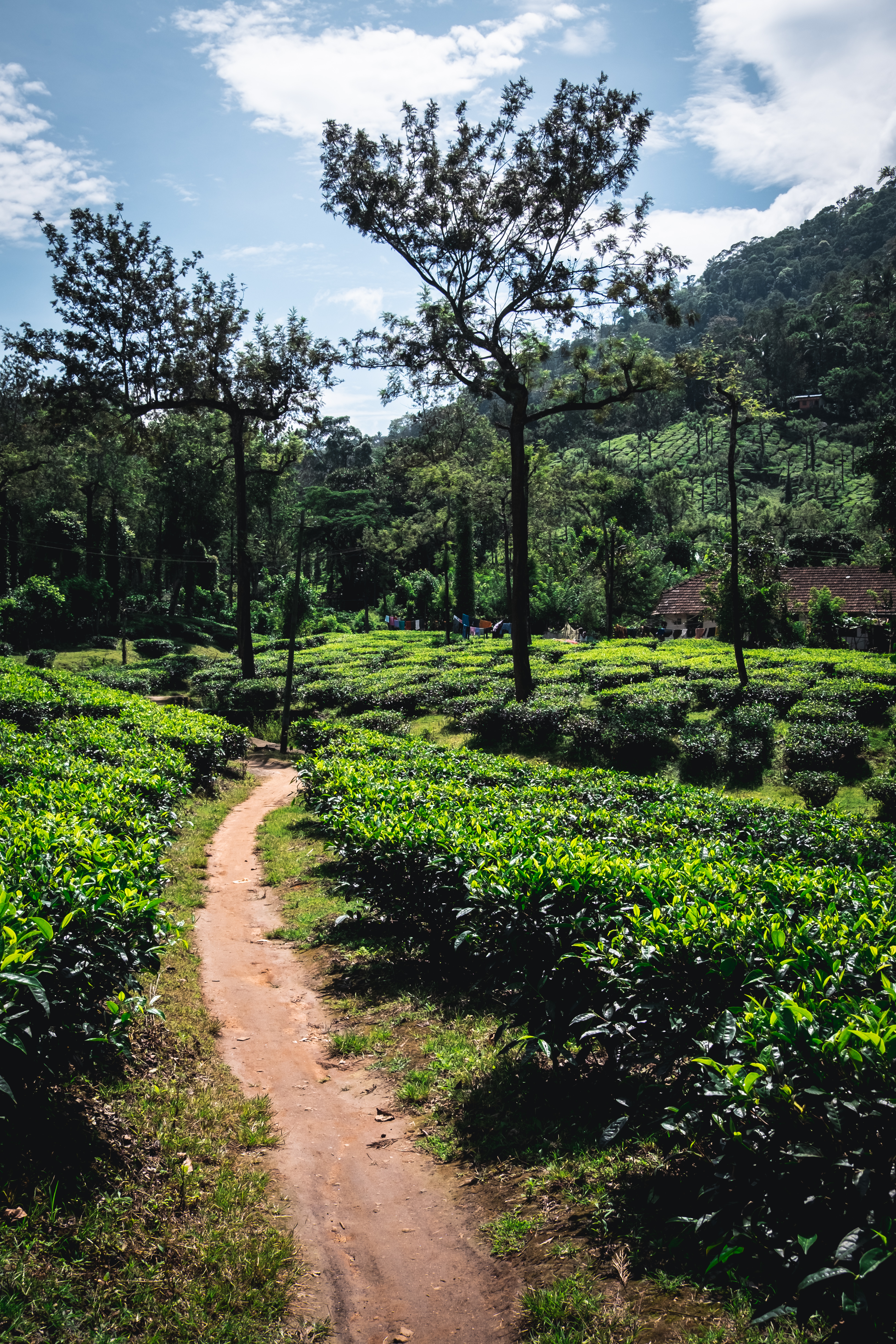
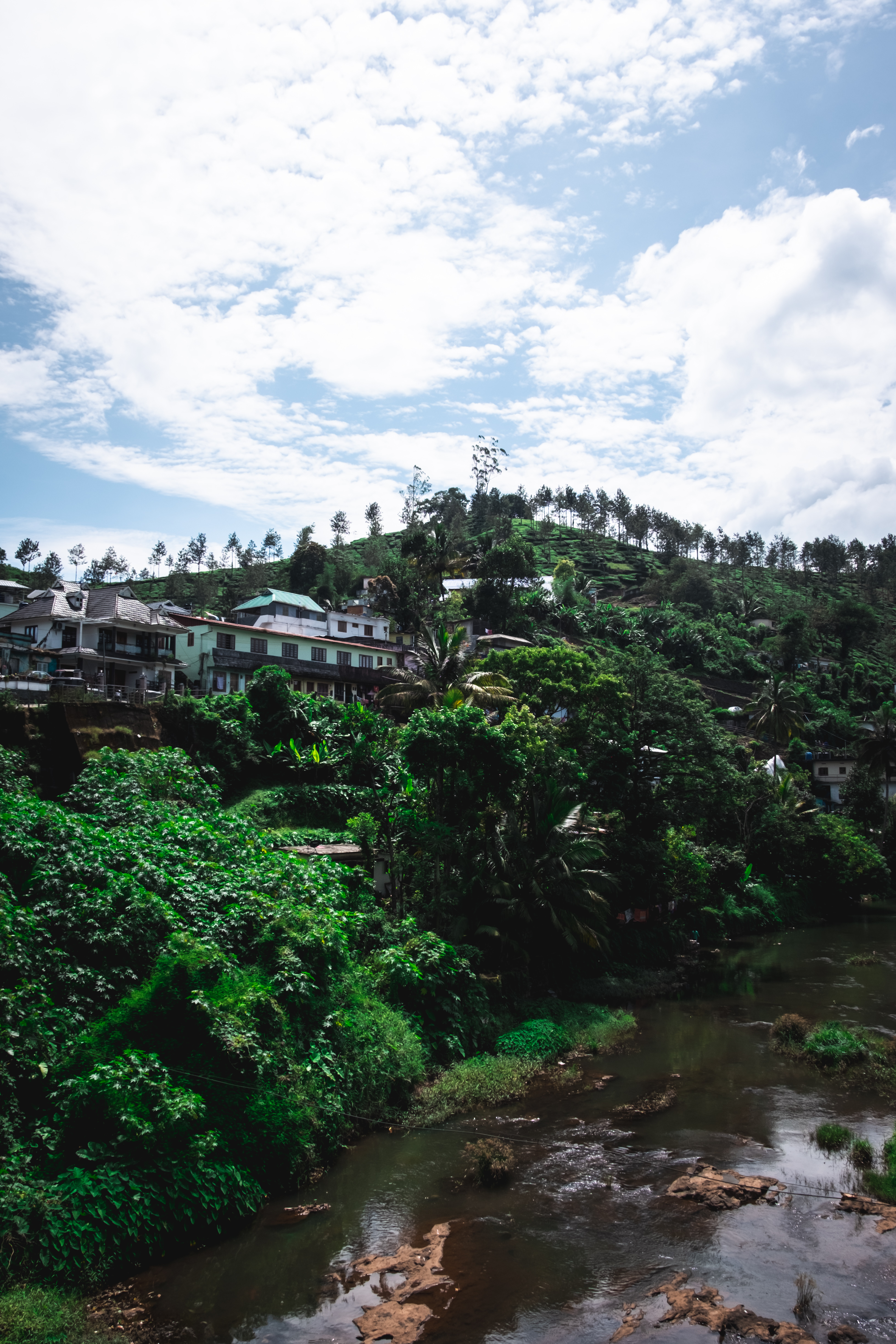
Kumarakom: a calmer backwater experience
In line with our goal for this visit to be slow and quiet, we descended from Thekkady’s mountains to the serene town of Kumarakom. The Kerala Backwaters stretch for miles and miles, with Alappuzha (Alleppey) as the entrance from the sea. Kumarakom boasts access to Lake Vembanad, the largest in Kerala.
The backwater canals in Kerala are a mix of naturally-formed rivulets and manmade waterways. These days, it appears that most of the larger canals are traversed by tourists (more on that later), while those who live along them use the water for daily washing. There is also lots of fishing that happens, as seafood is foundational to Keralan cuisine.
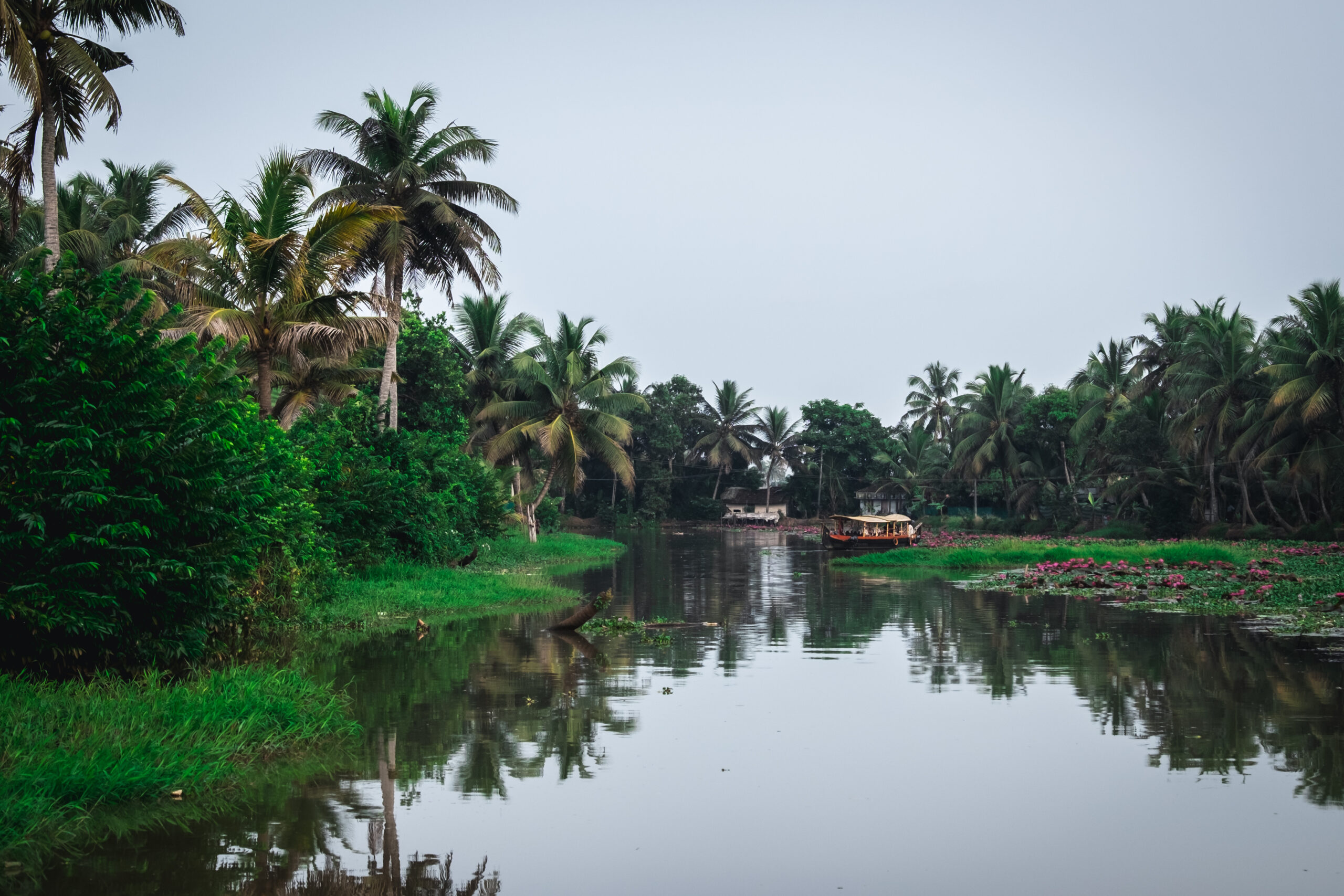
How to visit the backwaters
There are a lot of ways to find yourself floating on the canals. Some ways seem to be better than others.
There’s a growing trend to stay on a houseboat on the canals— these immense vehicles carry you through the main canals, serve meals, and dock so that you can spend the night. Contrary to what I thought initially, these houseboats aren’t actually people’s homes. They are created for tourism specifically, and they are quite large.
Due to all the houseboat traffic, there are limitations on when houseboats are allowed to operate. Apparently during high season, houseboats can generate quite a bit of noise as people seem to party on them.
After reading a bit more, we decided we did not want to stay on a houseboat, as it seemed to be more disruptive to local life and not a particularly authentic experience anyway. We did also read about riding in a canoe— basically the opposite of a houseboat experience— but felt that the labor of rowing around (whether ourselves or someone else) would make it difficult to see very much at all.
So, we decided to go with a medium size boat in the early morning, where only we and a few other boats were quietly on the move. And seeing the houseboats on the water (not allowed to operate until 8:30AM), we felt we made the right choice.
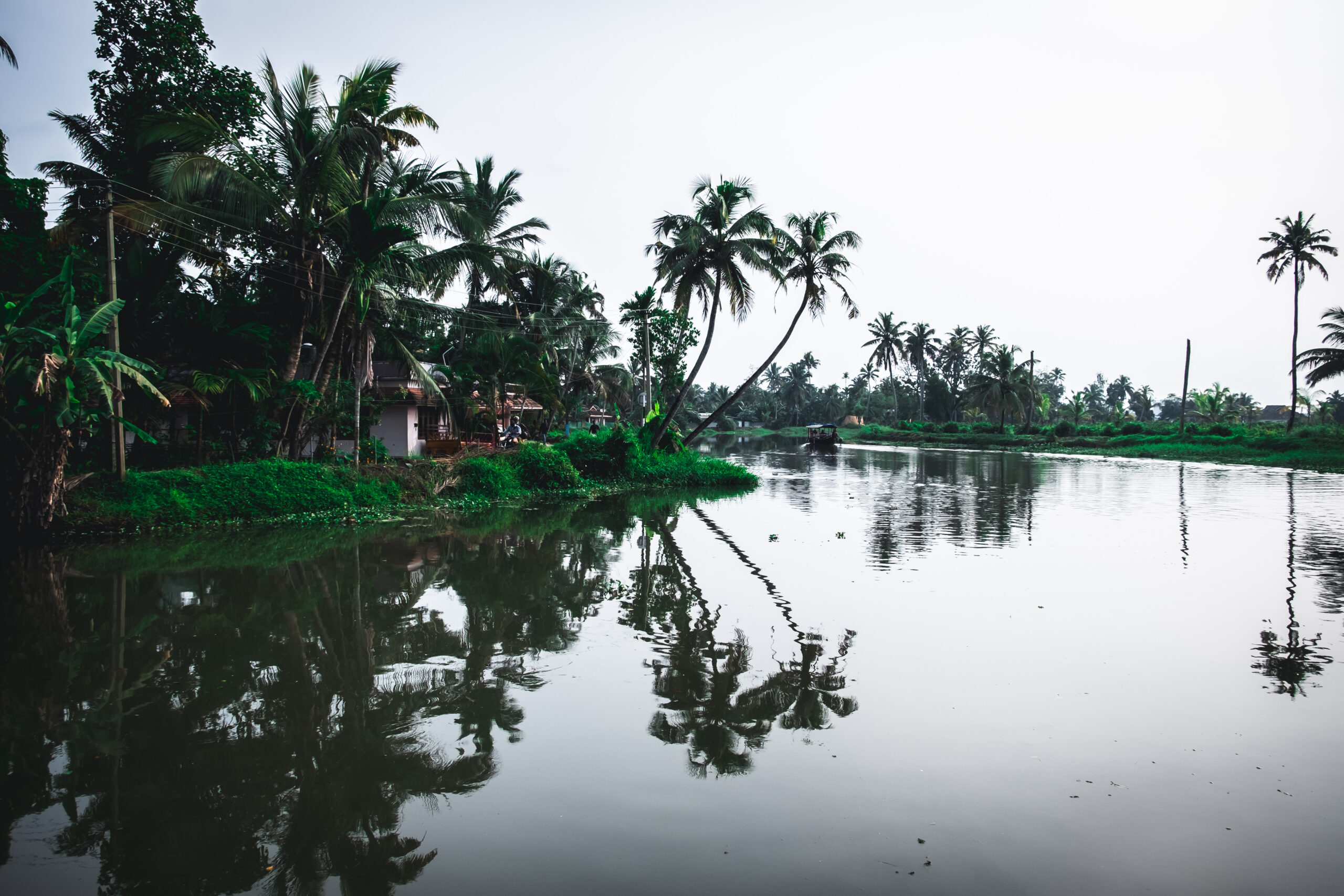
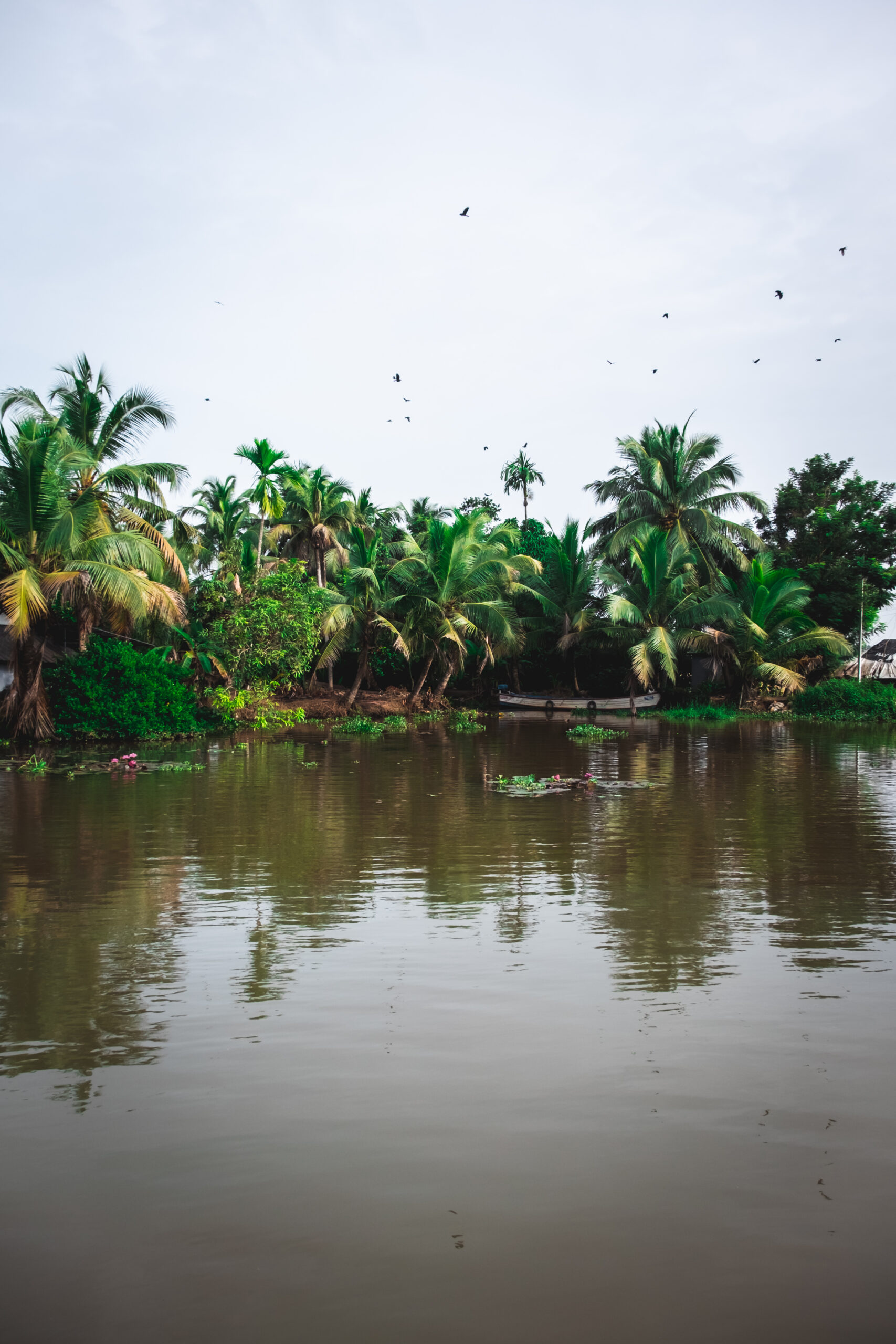
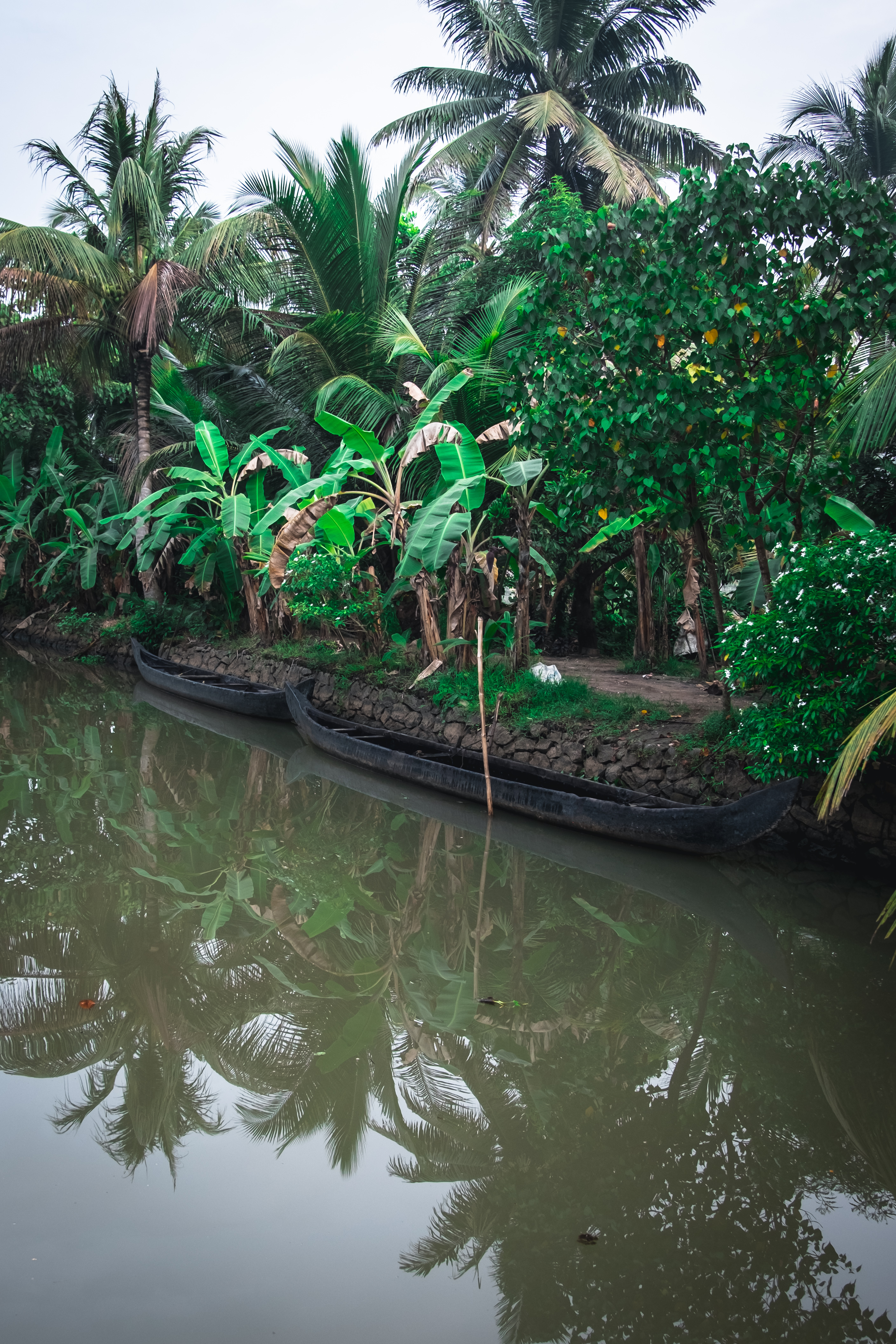
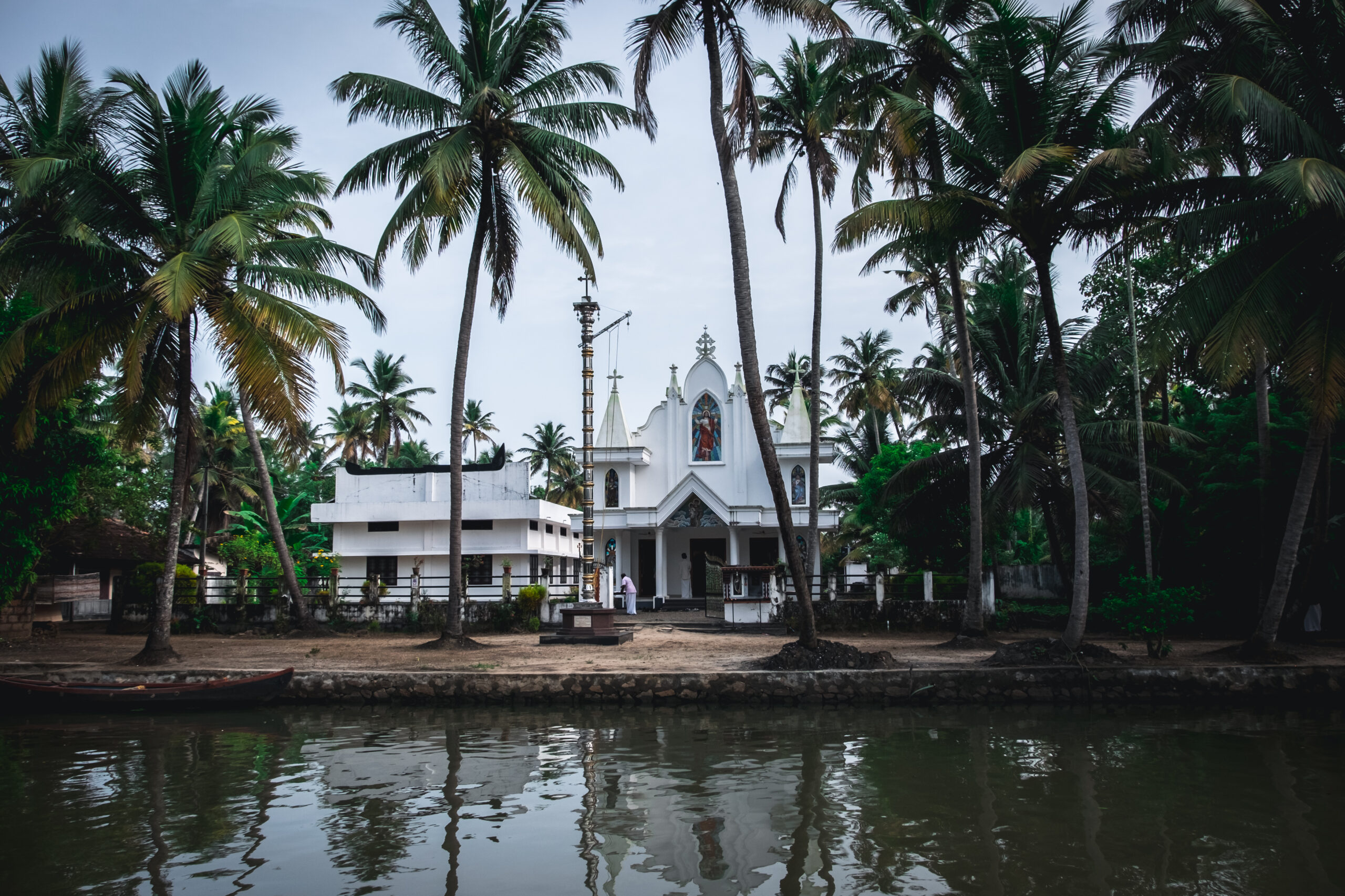
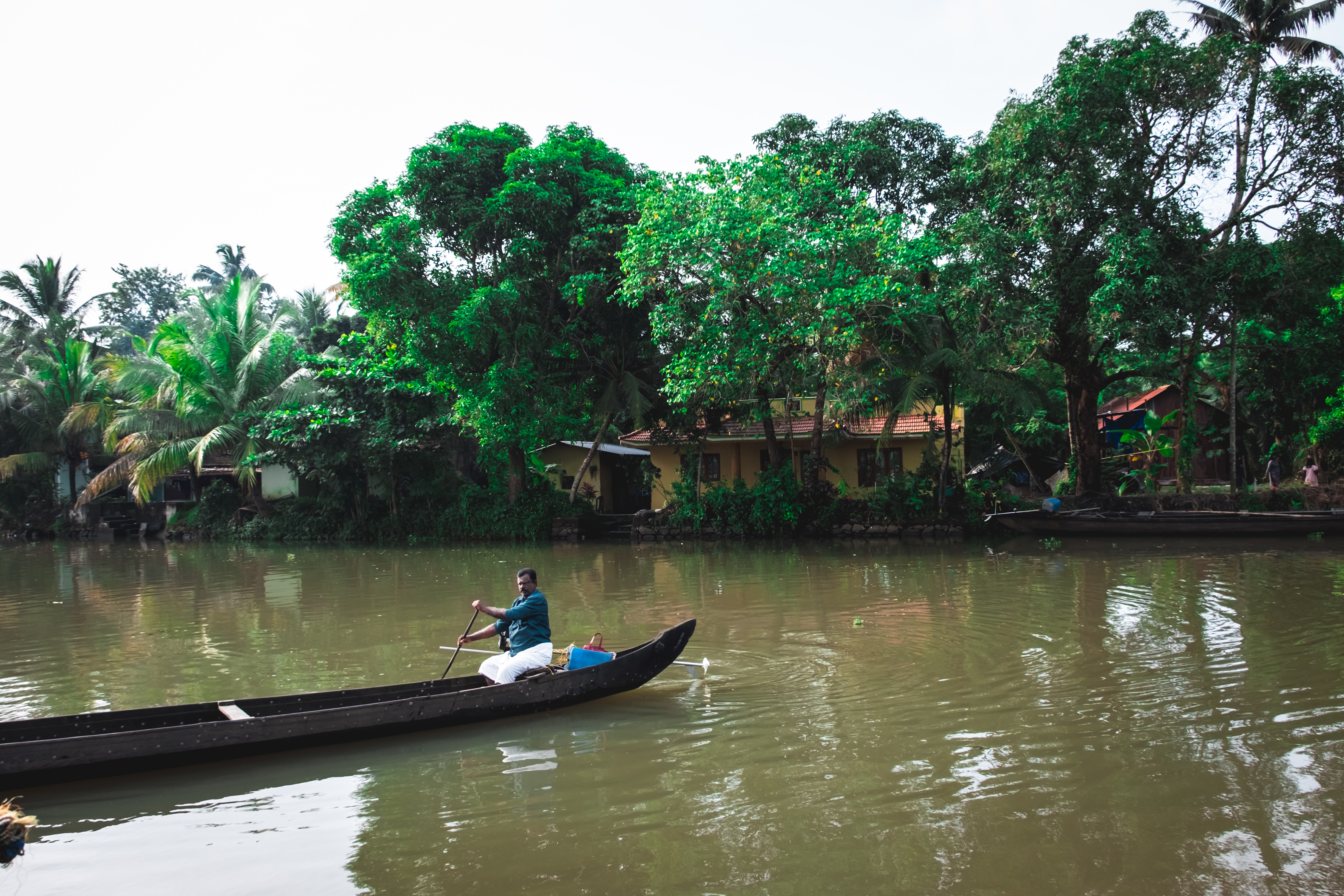
Boating on Vembanad Lake
One of the benefits of being in Kumarakom is access to the stunning Vembanad Lake, and it is absolutely worth taking another boat to visit at sunset. If you stay at the Kumarakom Lake Resort (which I highly recommend), the boat ride is included daily. A number of other lakeside resorts offer boating, and there are takeoff points as well if you’re staying somewhere in town. Again, the easiest way is to ask your accommodation to recommend the right option for you.
As the weather in Kerala changes frequently from rain to cloud to sun, it makes for stunning painted skies at dusk. Bright pinks and yellows faded to blues and purples as the sun sank over the horizon.
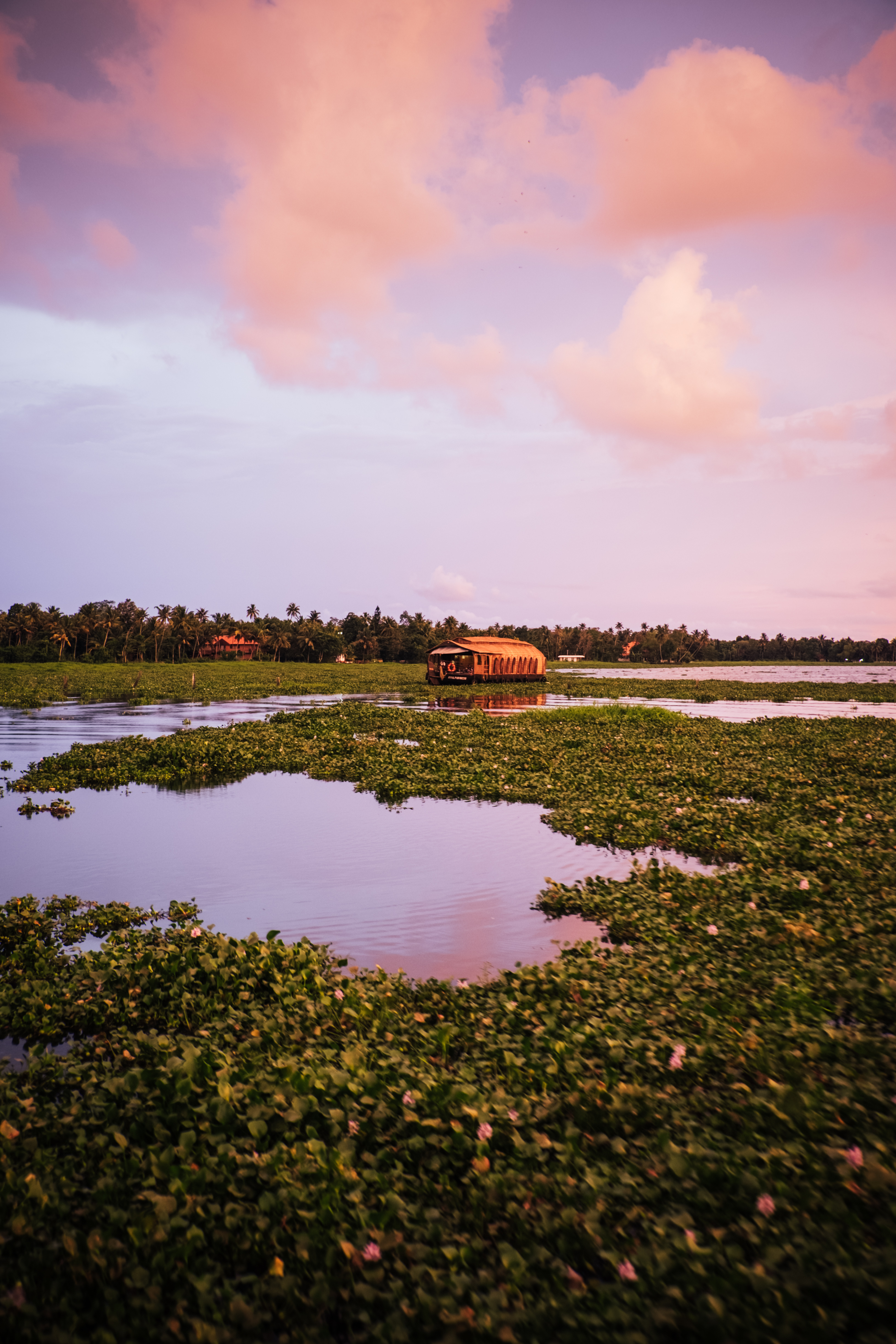
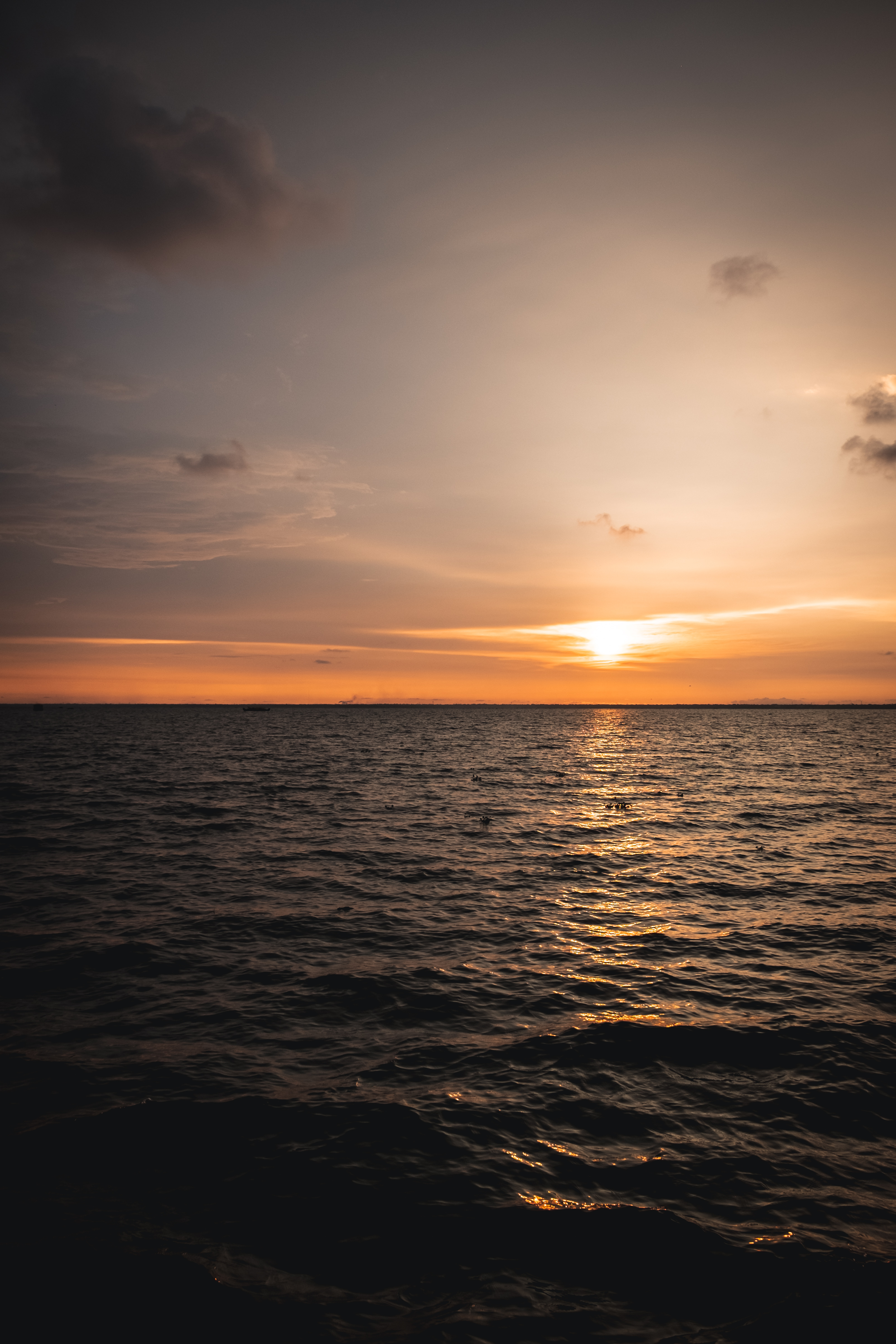
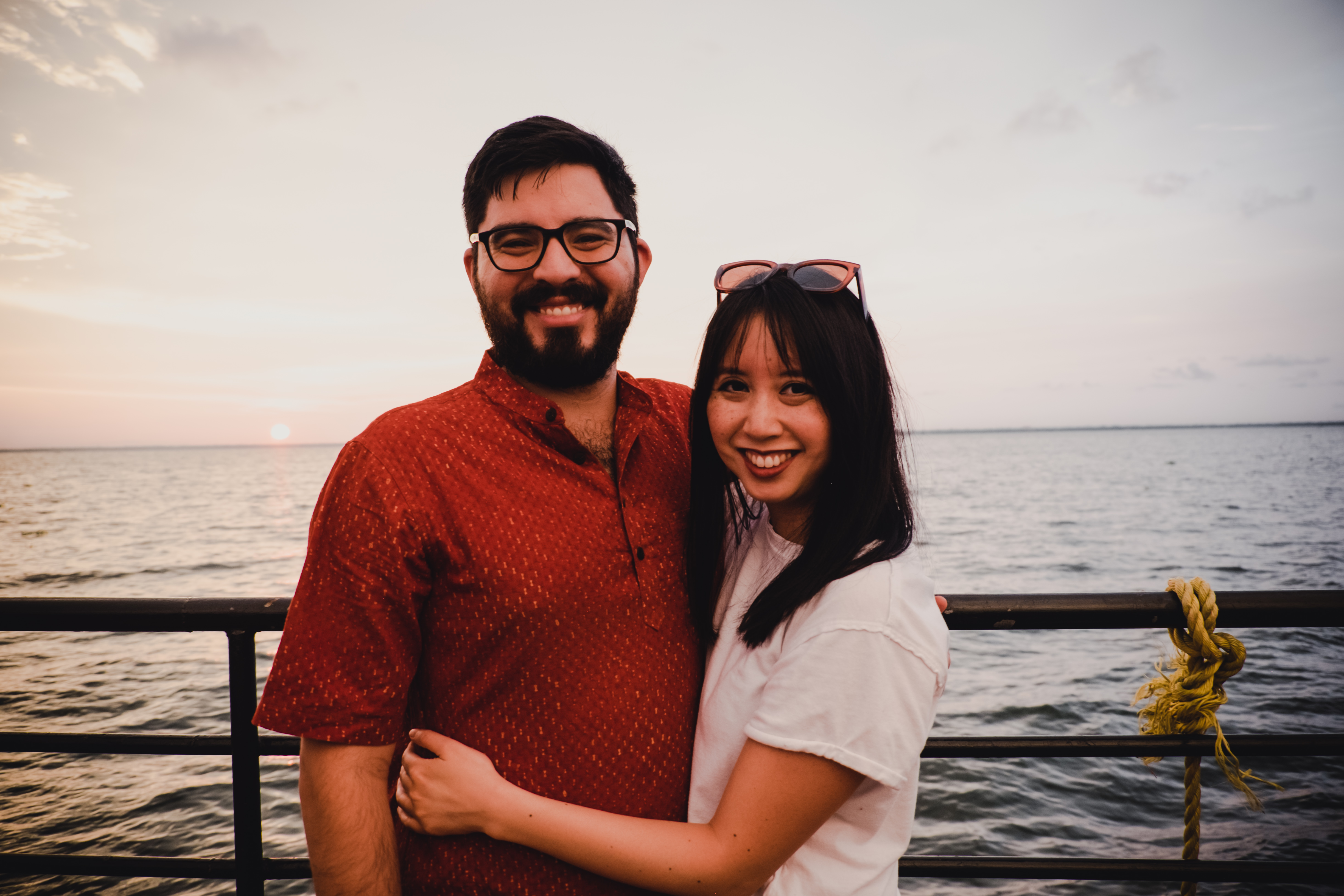
Discovering delightful traditional Keralan cuisine
Food in Kerala is phenomenal. It’s nuanced, surprising, and yet really delicious in a way that is easy. I can’t count the number of times throughout our visit when I said “let’s try making something like this at home”. The use of spices and flavors is inspiring.
One of my favorite things was the traditional Keralan fish cooked in coconut oil and spices, served with appam. Despite being creamy and rich, it lacked the heaviness of many Northern Indian curries and gravies. The broth was both complex and bouyant, never overwhelming.
I also really loved the local prawns grilled with Kerala seasonings. The spices complemented the sweetness of the shrimp perfectly, with just a hint of pepper, acid, and smokiness.
On our last day in Kerala, we had the privilege of enjoying traditional thali on banana leaf— called Sadhya. This celebratory meal features more than 20 elements, all cooked separately but delightful together. There were multiple pickles, dahl, a banana gravy, buttermilk, Kerala red rice, and myriad flavors I can’t name. The miraculous thing about it is how beautifully everything paired with each other.
Sadhya is frequently featured as a traditional meal to enjoy in Kerala, but it is really labor-intensive and rather difficult to find. If you’re intent on trying it, you’ll need to arrange for it ahead of time. We asked for it in Forte Kochi and were told it was out of season; thankfully our hotel in Kumarakom had a chef willing to make it for us! Even if you aren’t able to get Sadhya, everything else is delicious too.
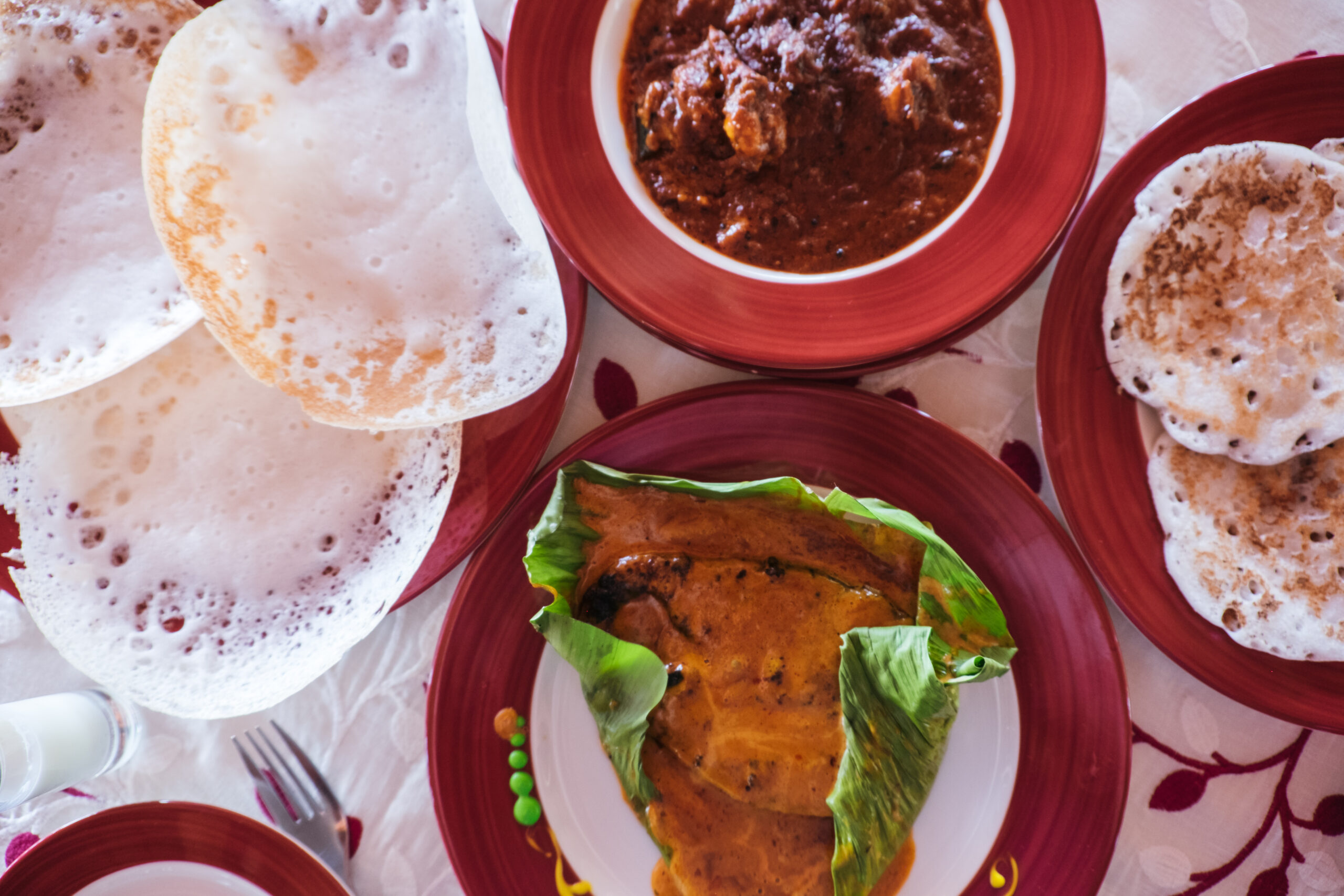
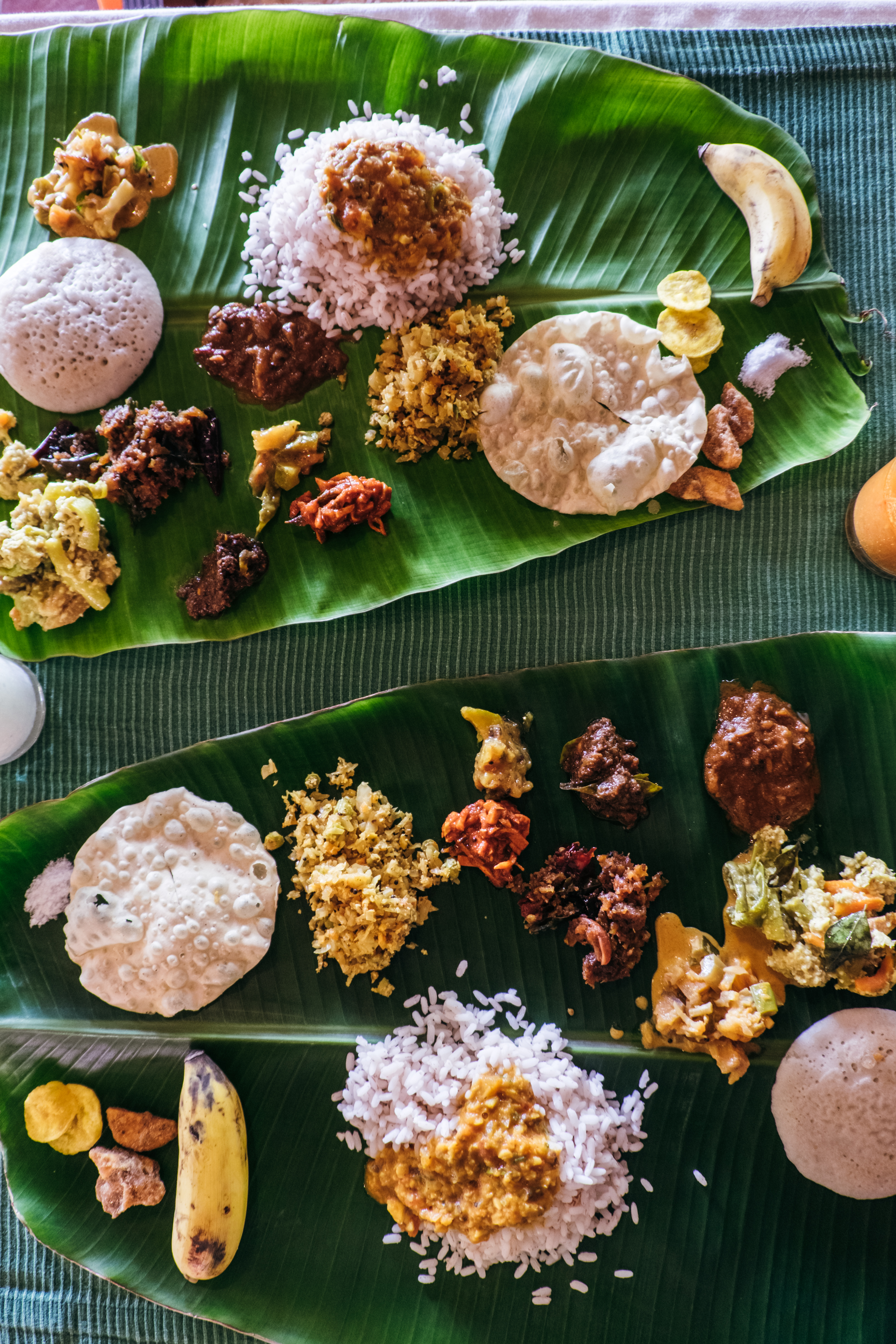
A few final thoughts on Kerala
I used to think that “responsible” travel meant a deep dive into anything and everything on offer, especially if it was a supposed enriching or educational experience. This time, I’ve realized that my mindset has shifted. There are so many ways to deeply appreciate a place, its people, the earth. Slowing down and savoring each moment fully, however simple, is another way.
Before this trip to India, we read Arundhati Roy’s famous work, The God of Small Things, which is a story that takes place in Kerala. The book is complex, beautiful, and moving— and if you’re able to read it before your visit, I highly recommend it.
Meanwhile, I’ve come to really appreciate Roy. Here’s a quote from her:
Another world is not only possible, she is on her way. On a quiet day, I can hear her breathing.
